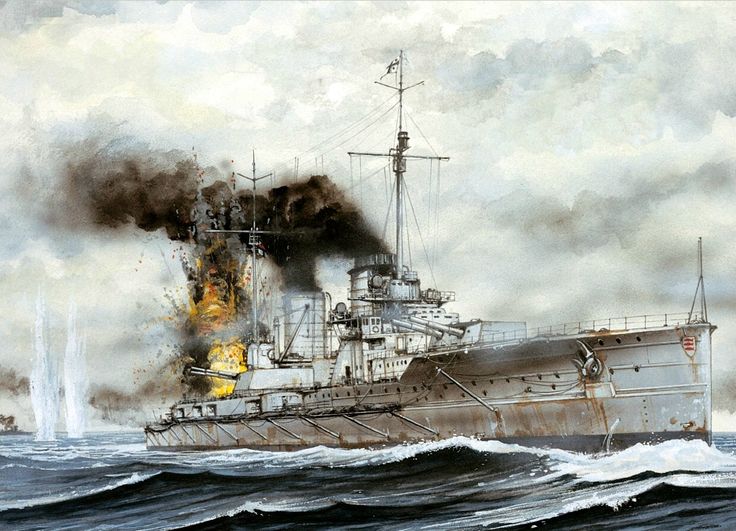 "The neutralisation of the Japanese power in the South China Sea is a necessity for us. The Japanese, whether manipulated into this war by our perfidious enemies or not, have struck at us without warning, and threatened the safety of our citizens and our great Reich's interests in the Far East. A peace, therefore, can -and
"The neutralisation of the Japanese power in the South China Sea is a necessity for us. The Japanese, whether manipulated into this war by our perfidious enemies or not, have struck at us without warning, and threatened the safety of our citizens and our great Reich's interests in the Far East. A peace, therefore, can -and must
- only be concluded when their power is well and truly broken; when they can pose no threat to Germany any more.""From the moment the first shot was fired, we did not wish for a tentative peace; a peace that would burden us for many decades and would draw us ever back to the Far East. We wish for a peace that will allow us a free development and security for our new blood, in Europe and overseas!"-Excerpt from a Parliamentary speech by Herzog Johann Albrecht von Mecklenburg, Reichskanzler, 6th September 1913.
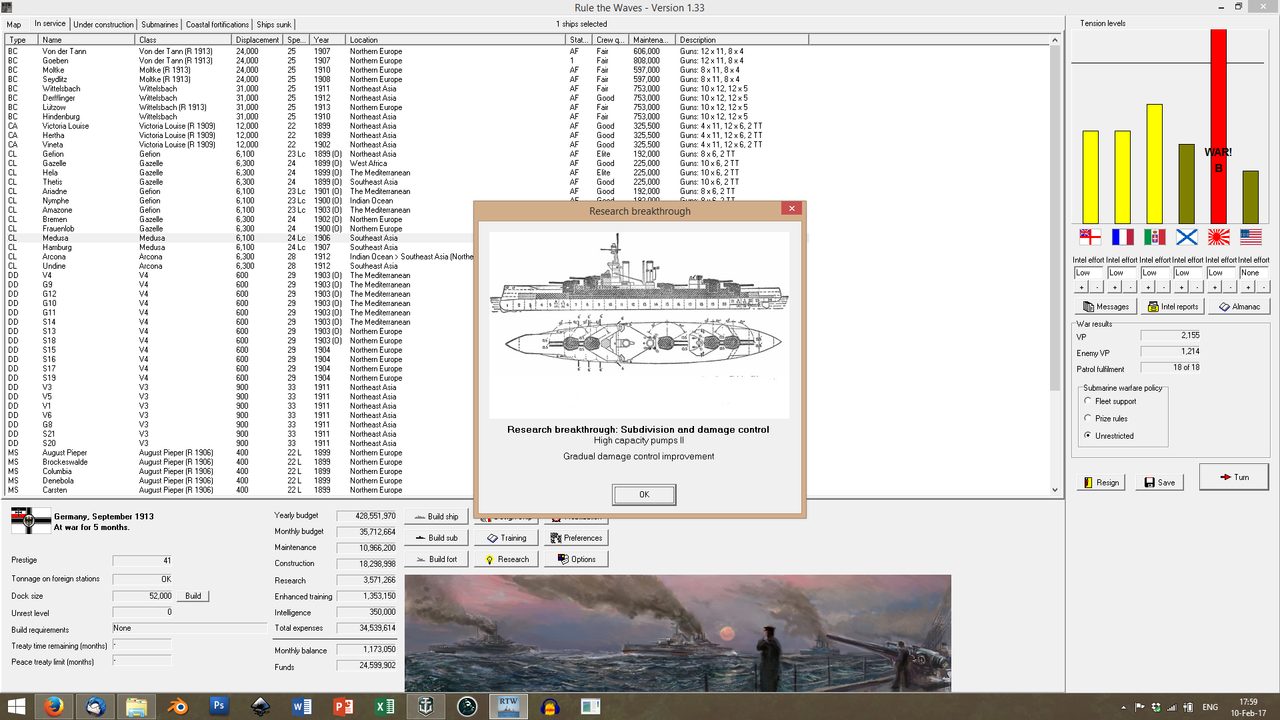
September rolls in; the R & D department submits designs for even more efficient pumps. The
Moltke incident is still a black mark in the
Admiralität, and focus is still primarily given to safeguarding ships from torpedo attack; or, at least, preventing them from succumbing to it. Especially against the dastardly Japanese!
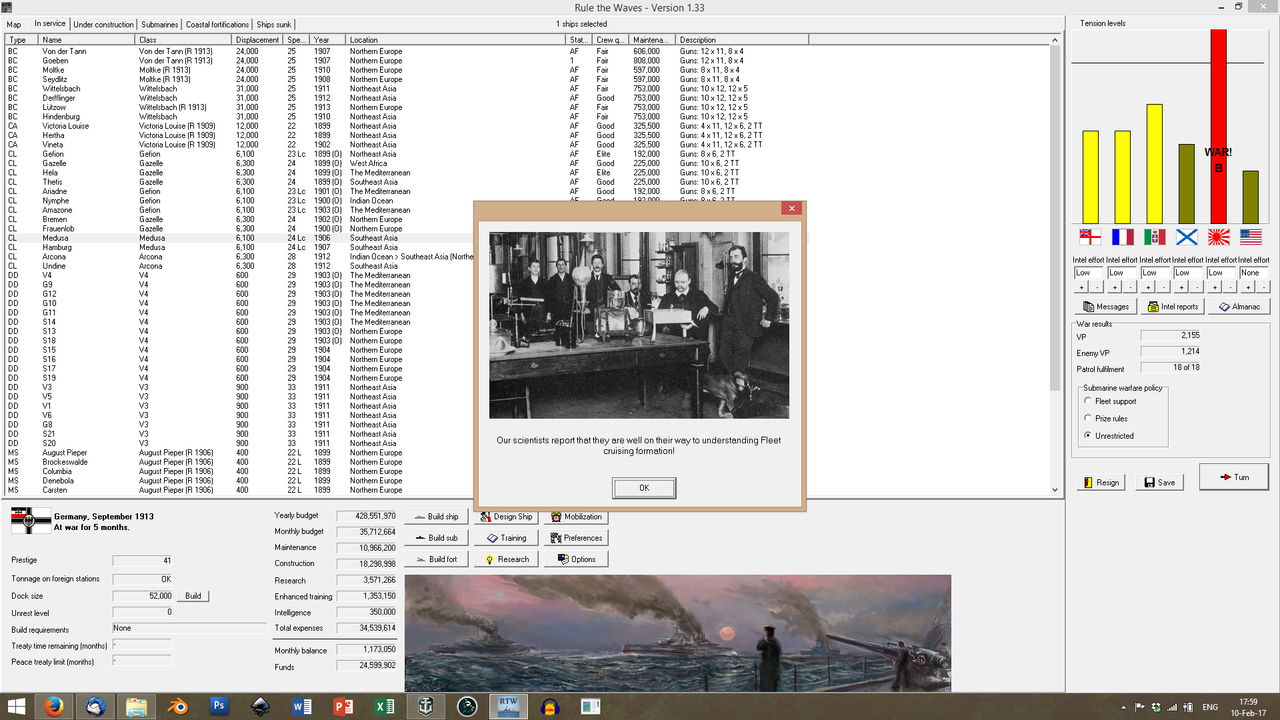
In addition, Galster and Büchsel work together to streamline and introduce new fleet cruising formations; formations that will facilitate rapid deployment into line-of-battle if attacked by light forces.
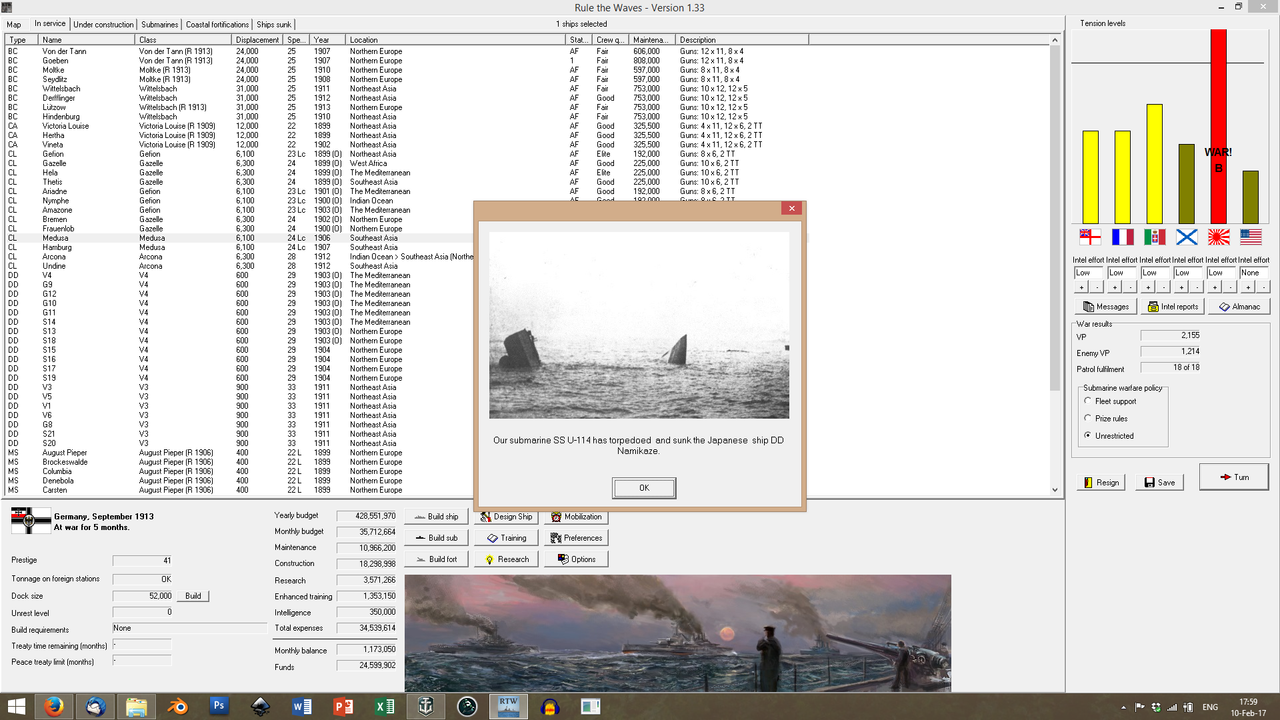
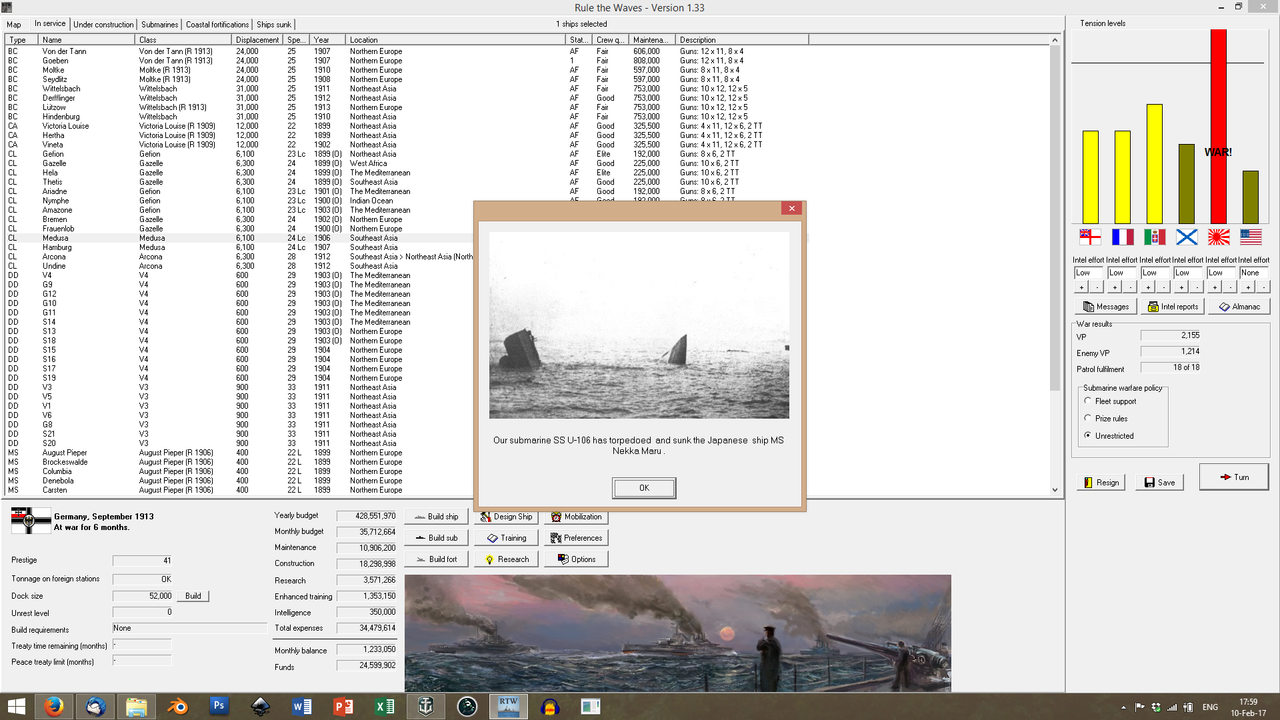
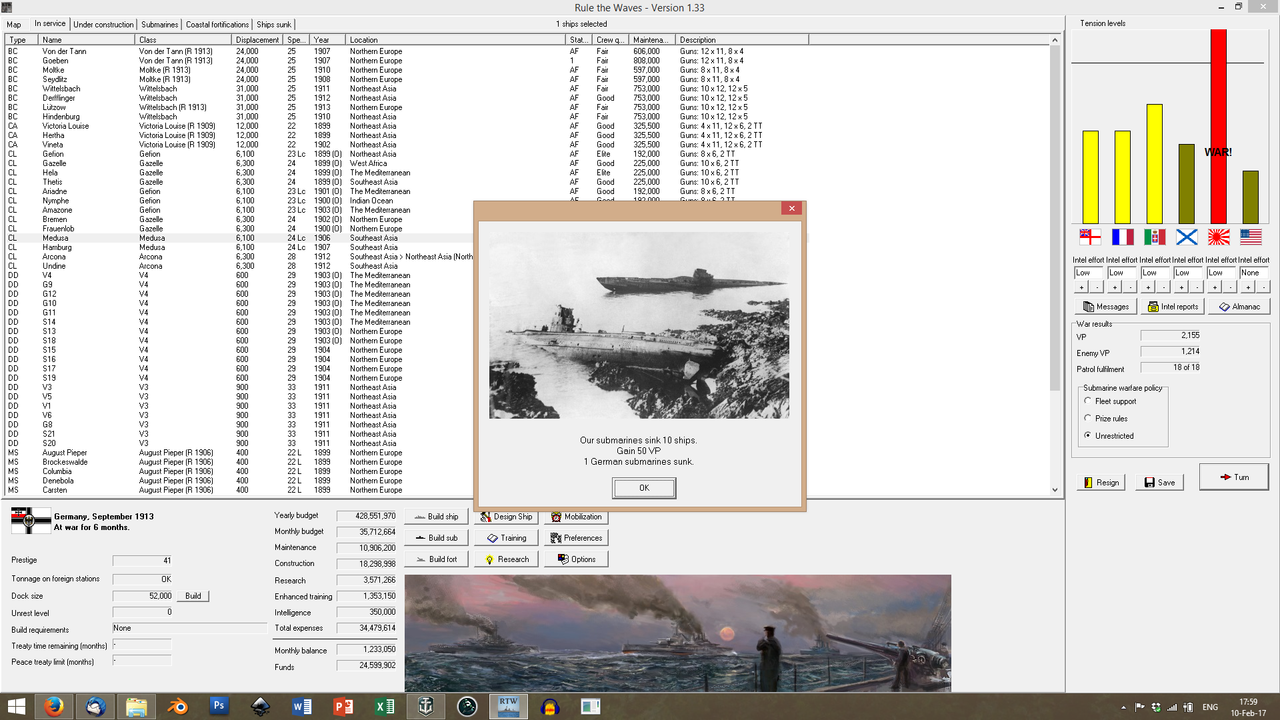
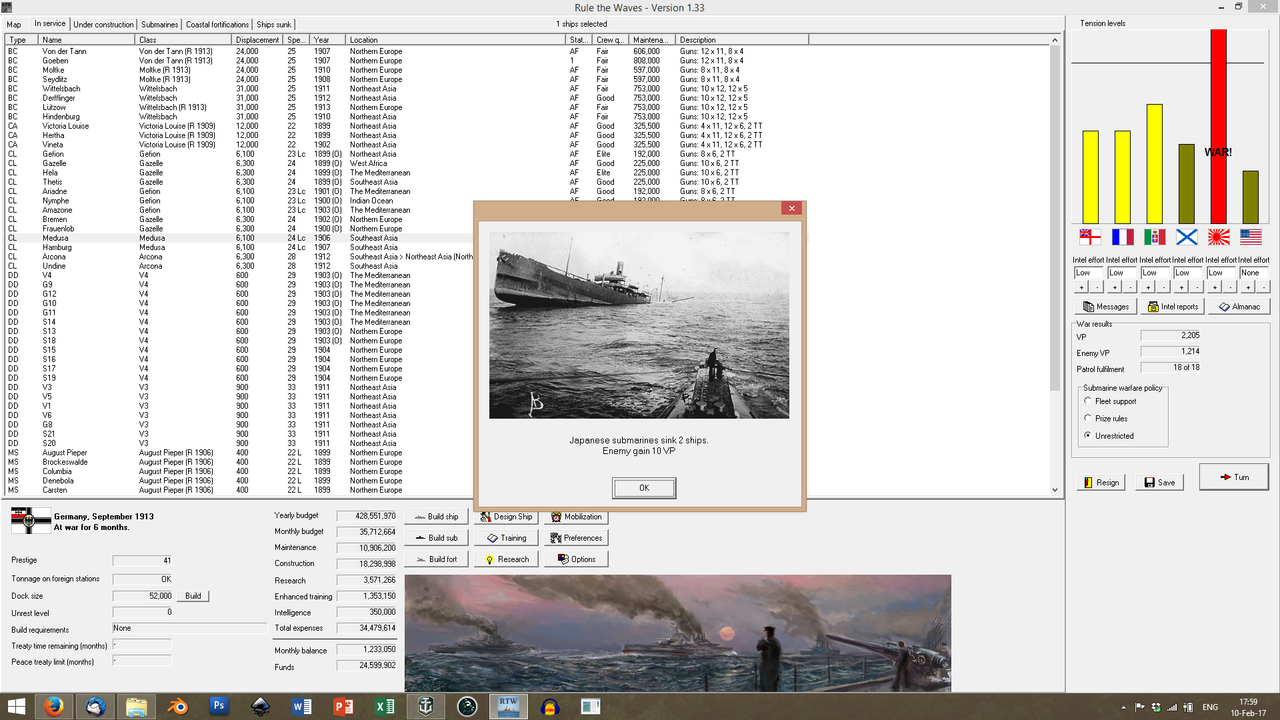
They are still underway and experimenting when the first reports for the month start coming in. The death toll for the U-Boote includes a modern Japanese destroyer and a coastal patrol vessel; not to mention ten merchantmen. The Japanese counter-offensive is weak, in comparison: they are clearly still unfamiliar with the intricacies of underwater warfare.
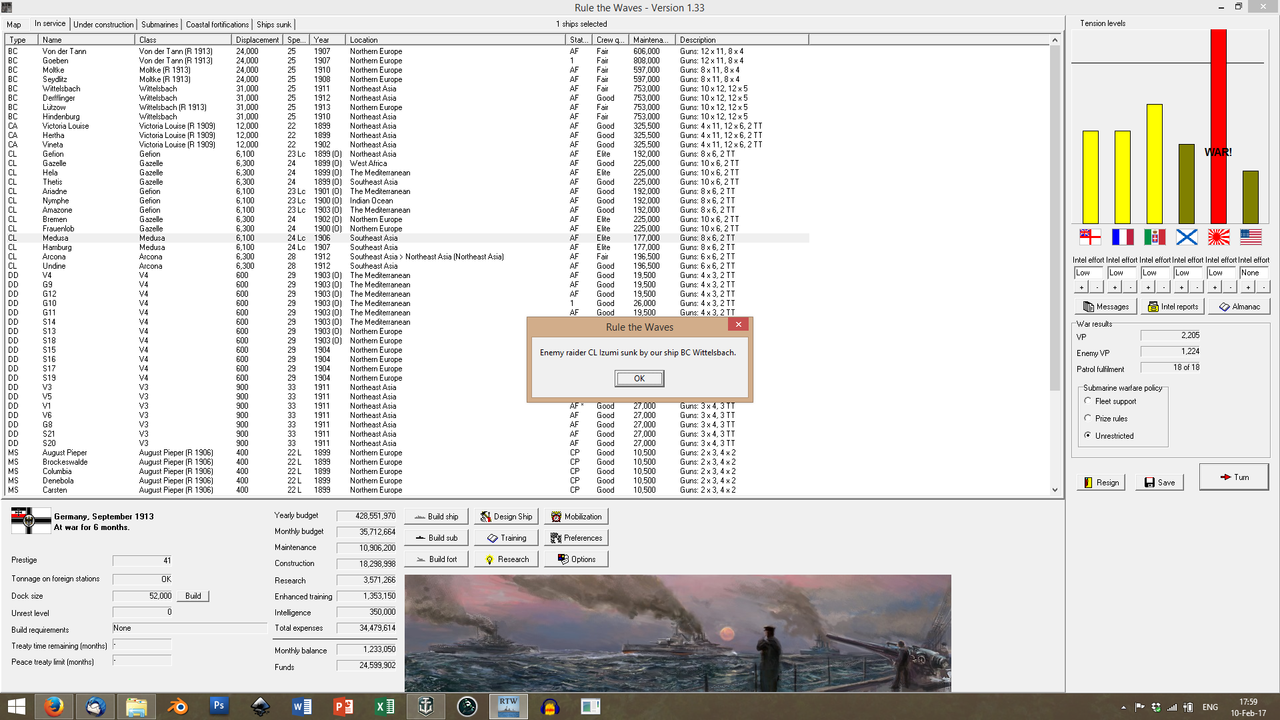

And, with regards to their surface raiders, the arrival of the German
Schlachtkreuzer on-station sounds the death-knell for the light Japanese cruisers. The
Izumi is tracked down by
Wittelsbach, which is faster and infinately better armed and armoured; the Japanese cruiser is lost on the 26th of the month, trying to sneak into the Marianas hunting grounds.
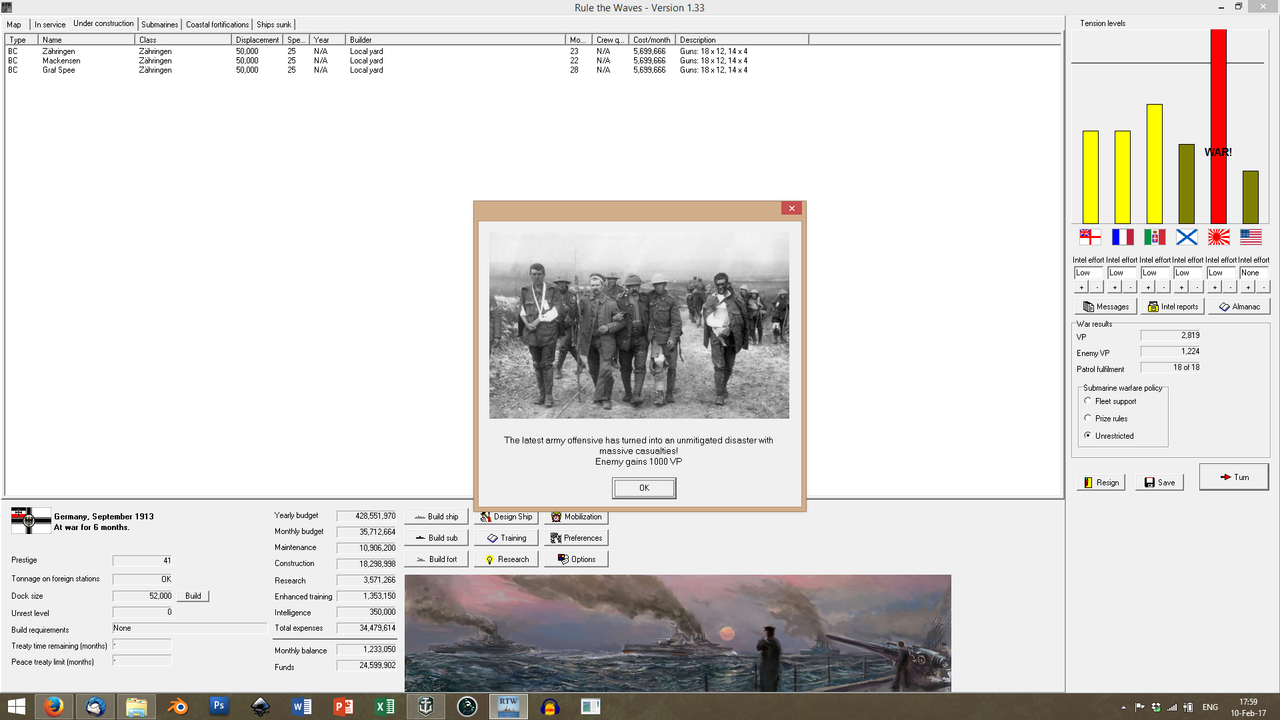
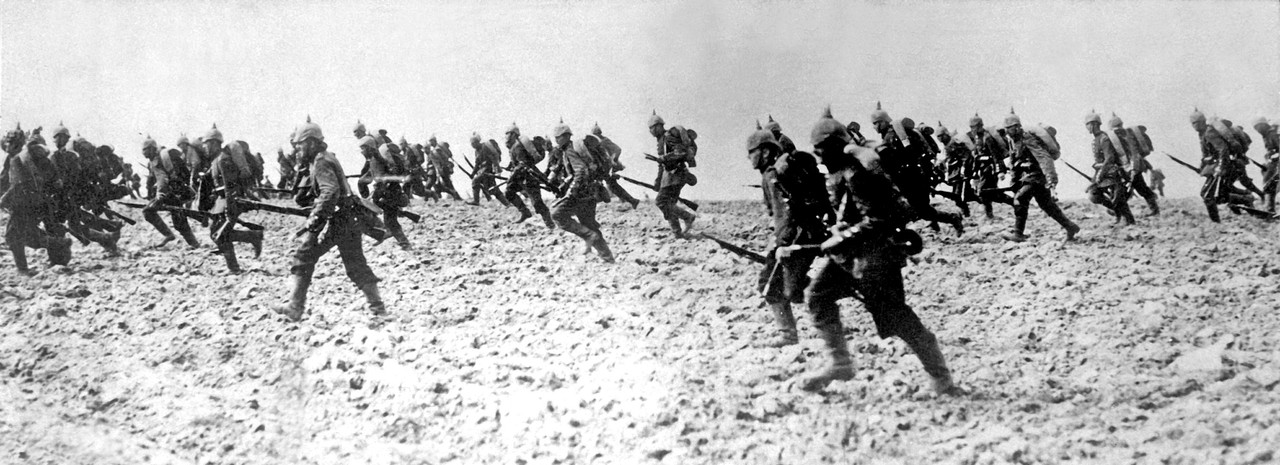
But the Japanese draw blood in return. Despite the warnings of the
Admiralität, the
Heer had pushed on with the proposed Korean offensive. They had smashed headlong into one of the most fortified and fanatically defended territories in the world. Casualties were
horrendous; and the resulting rout tarnished the reputation of the Army for years. It fell to the Navy to pick up the pieces and, in some cases, even evacuate stranded personnel, after the inevitable Japanese counter-attack. This tied down the fleet in regrettable but necessary land support operations; establishing a tight blockade on the Japanese Home Islands was, unfortunately, delayed.
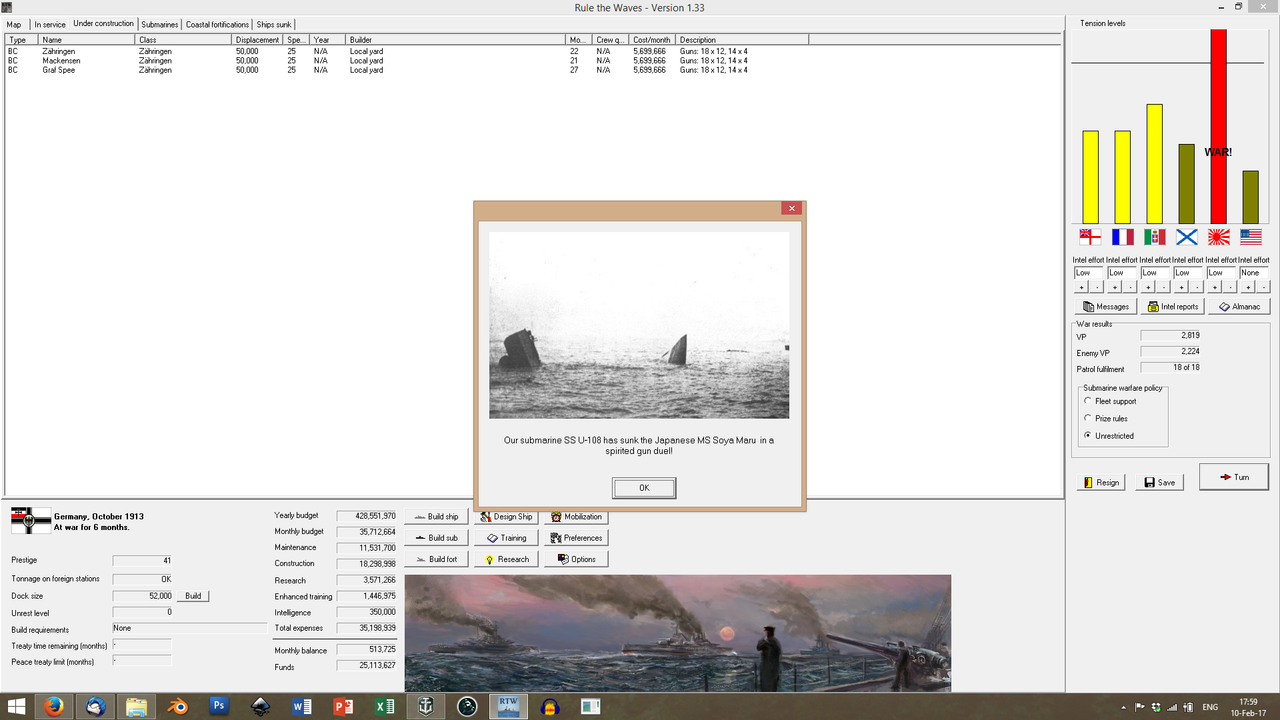
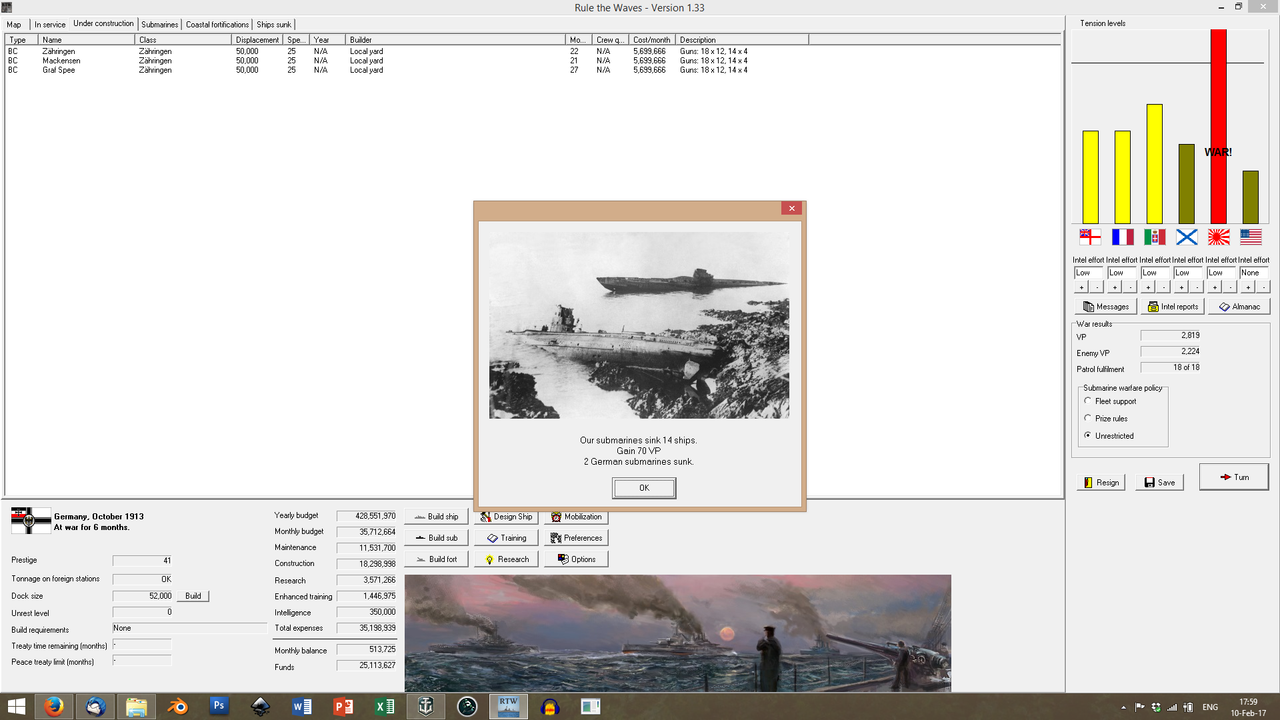
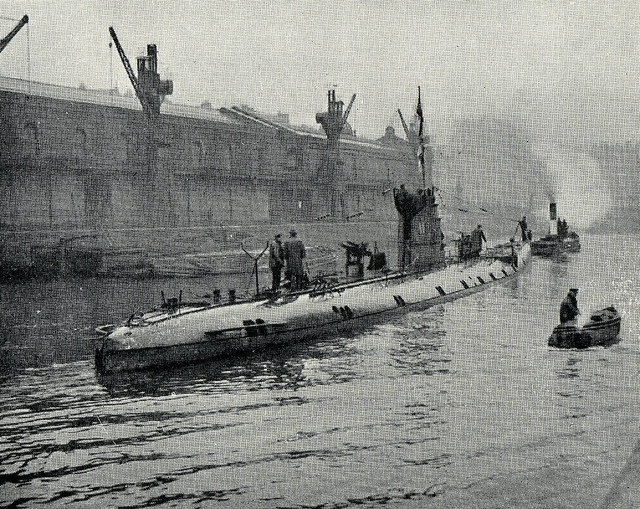
That said, the U-Boote were not idle. Wolfpacks sank fourteen Japanese freighters, some of which were valuable tankers meant to resupply the Korean offensive; and U-108 engaged in a victorious duel with a Japanese patrol vessel.
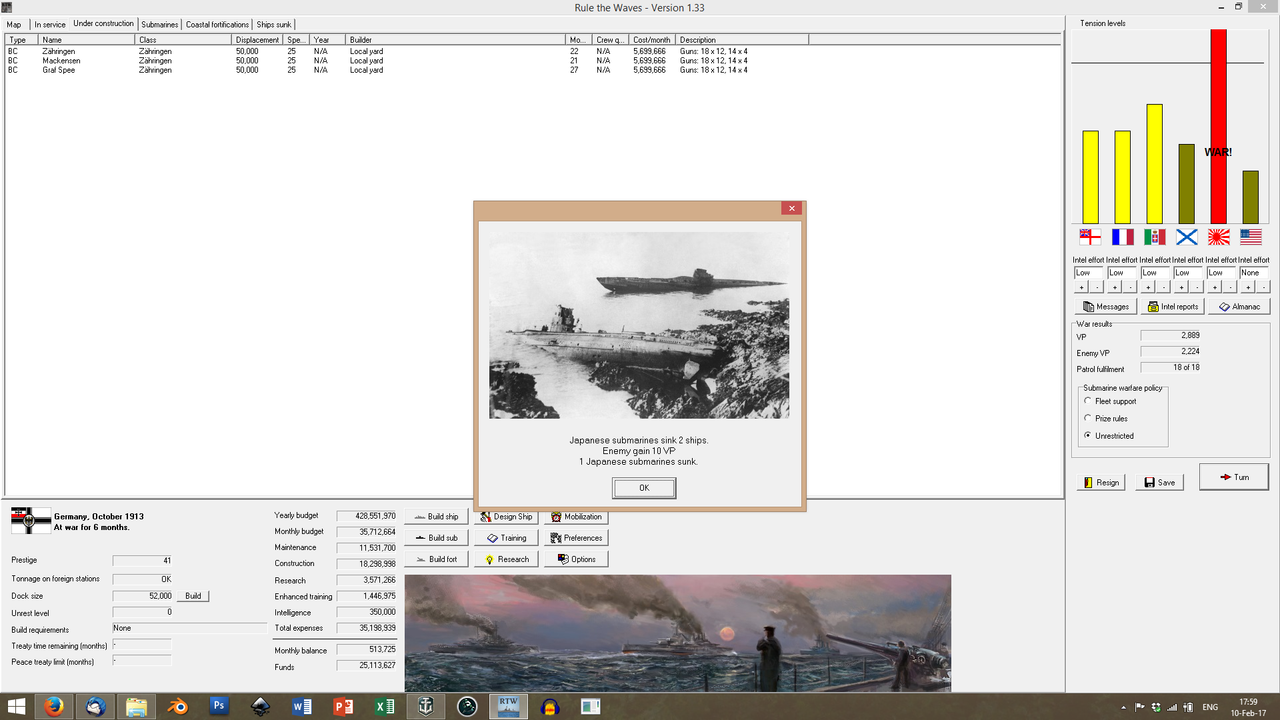
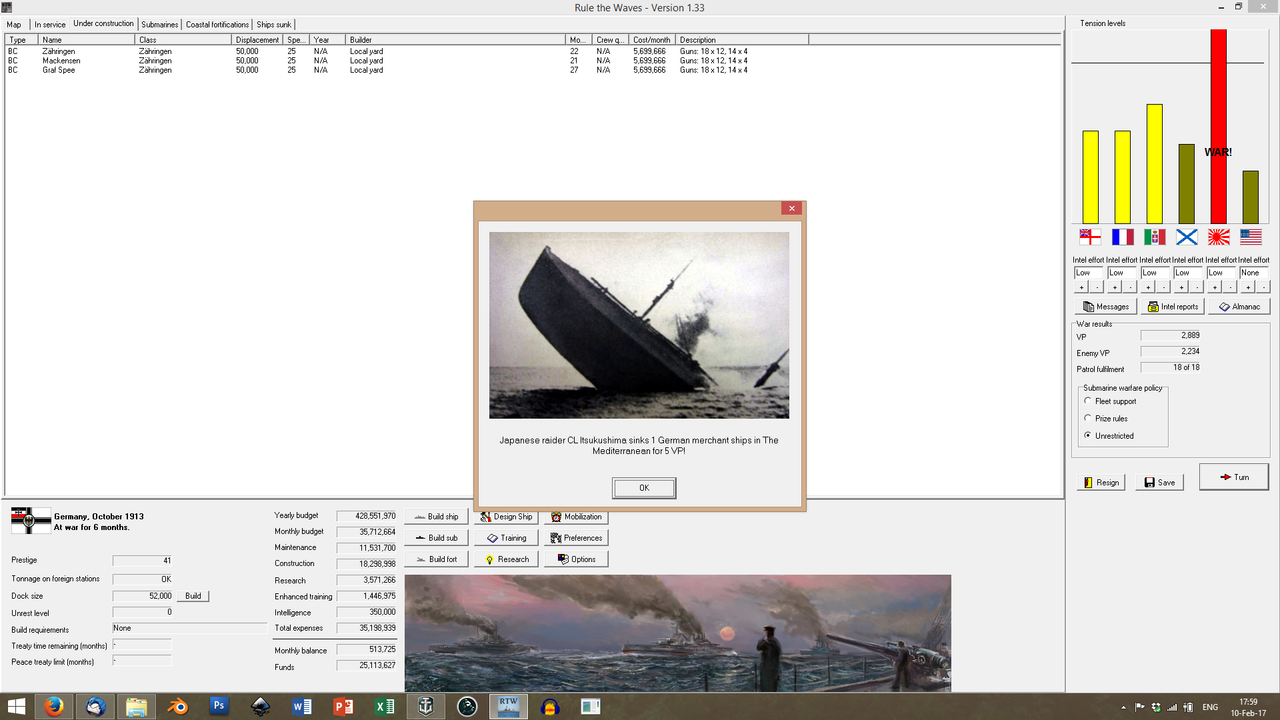
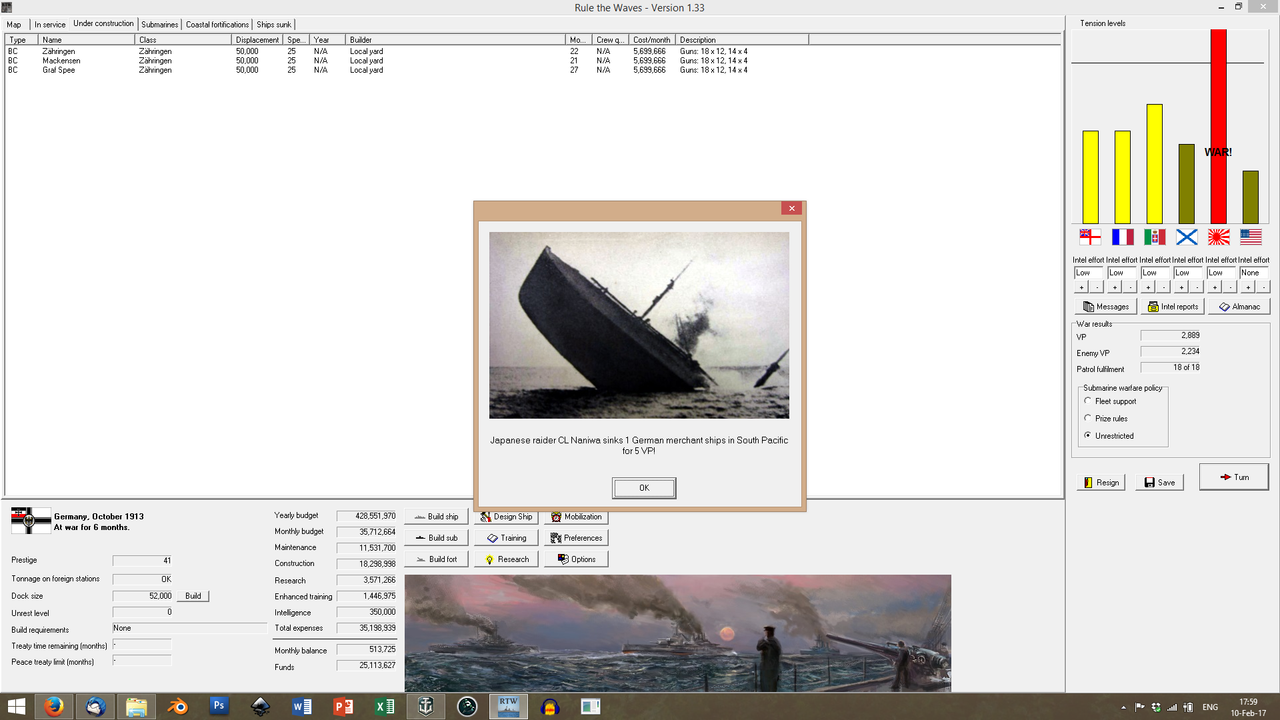
The Japanese strike back ineffectively. Their submarines are undersupplied and badly maintained; one of them is lost to German patrol vessels after one of only two successful ship attacks. Their raiders are, similarly, rather unsuccessful in their efforts.
Naniwa runs down the
Vogel, a seven-thousand ton freighter in the South Pacific; and the
Itsukushima surprises everyone when she,
somehow manages to sneak into the Mediterranean and sink the
Nordsee off Sardinia.
Schlachtkreuzer from the Atlantic are deployed to intercept her;
somehow she manages to escape. It is suspected that the British garrison at Gibraltar provides her with support, but that is never established beyond doubt.
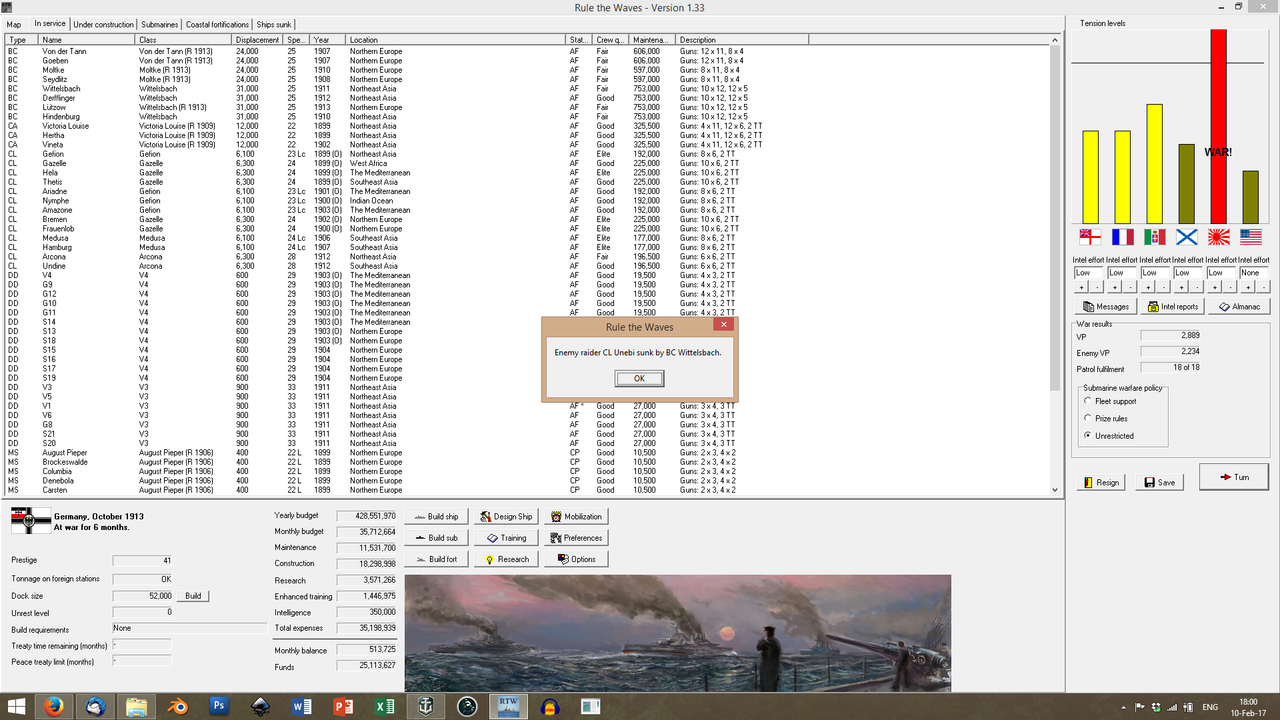

Meanwhile, by the end of the month, the
Wittelsbach returns to her anti-raider patrols, and nabs the
Unebi off Singapore.
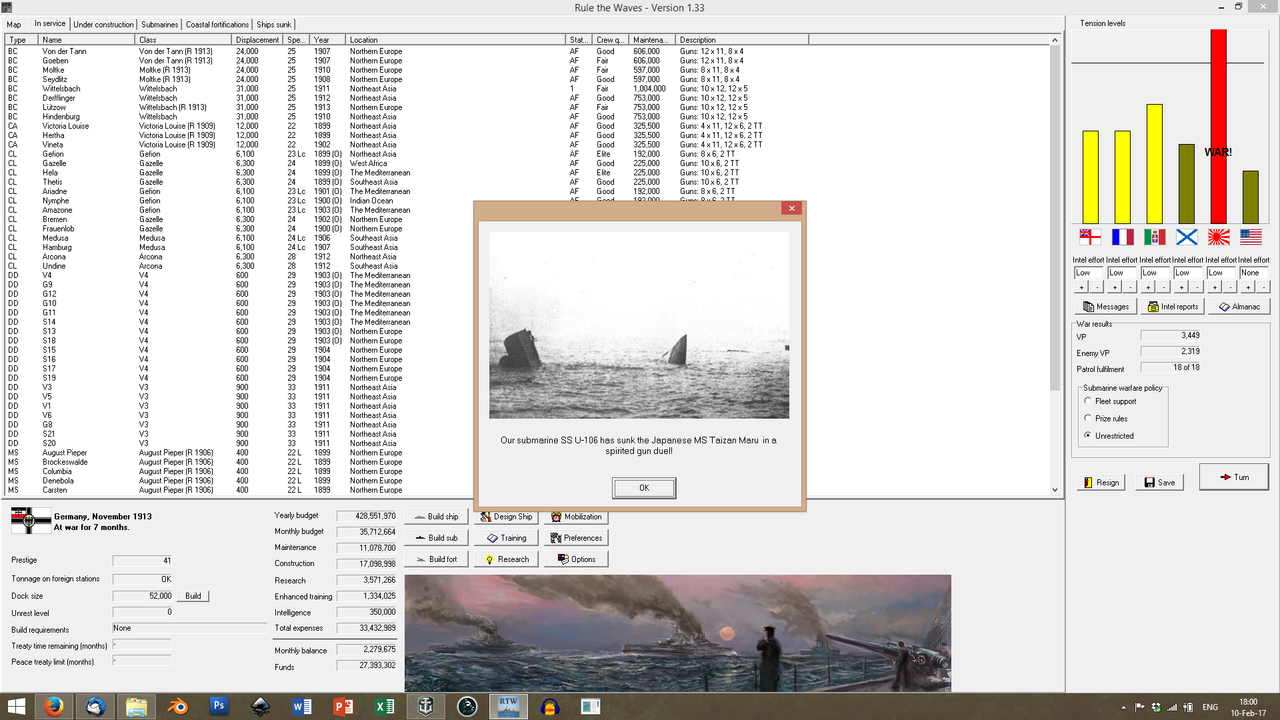
November; the
Admiralität puts into effect its plan to establish a blockade and starve the Japanese into surrender. First, submarines are dispatched, to clear the sea of patrol vessels;
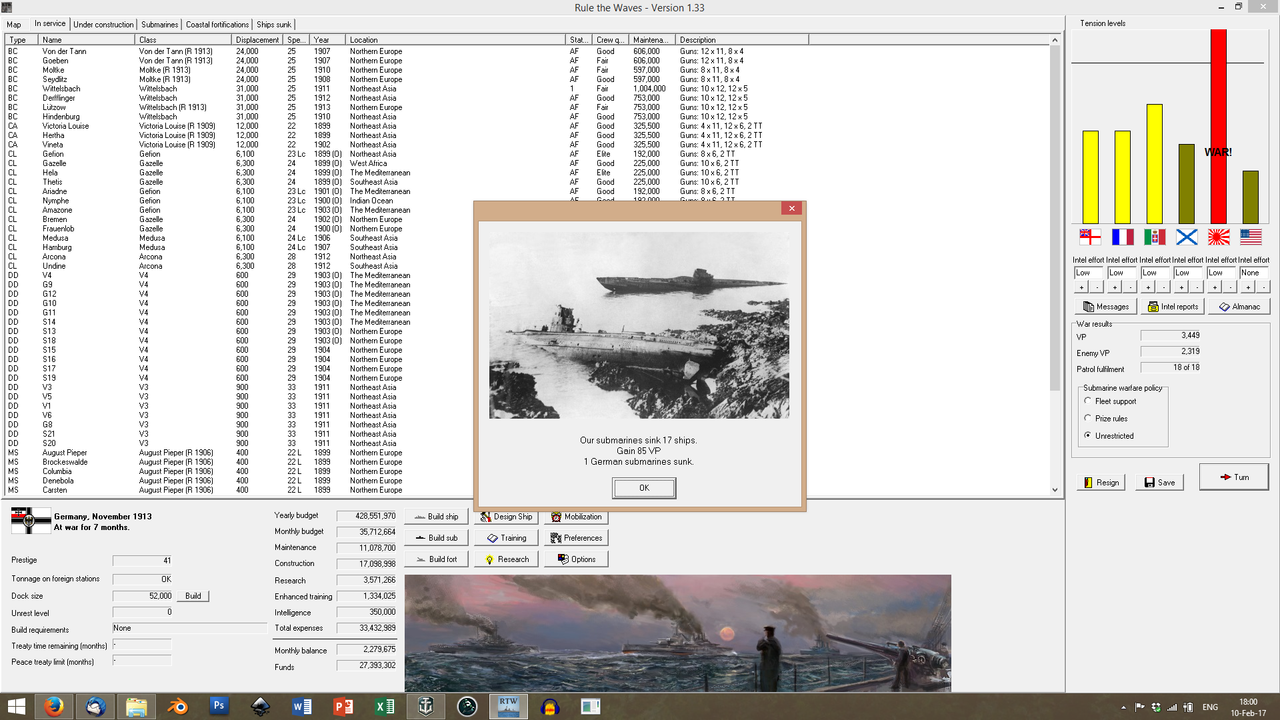
And then an all-out assault on Japanese merchant shipping is unleashed, with devastating results.
Finally, the fleet departs its harbours in the Southern Pacific and sails north. Galster, from on board the
Hindenburg, has intercepted Japanese communications that speak of a large convoy moving to resupply Korea, under heavy escort. He wishes to engage and sink it; and to cause as much damage to the Japanese battle-line as he can.
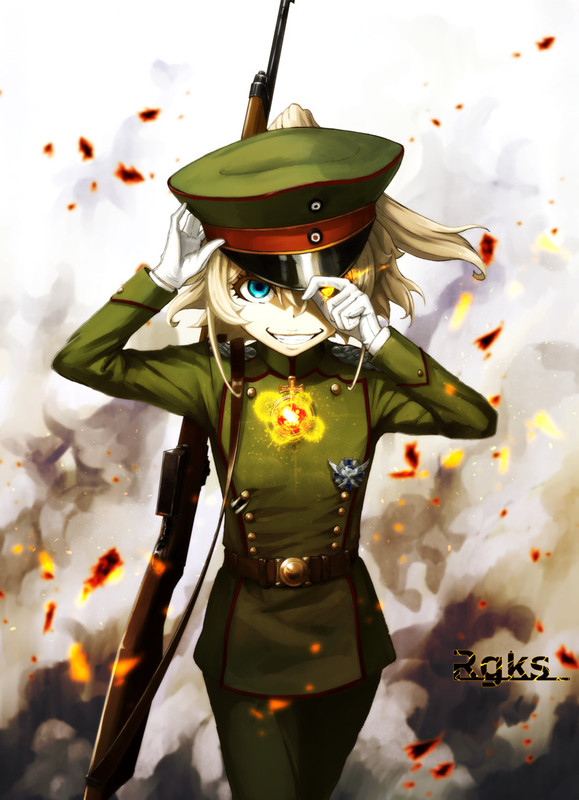
This is the first time (but
not the last), that a
Wittelsbach-class
Schlachtkreuzer will see combat. Germany holds her collective breath.
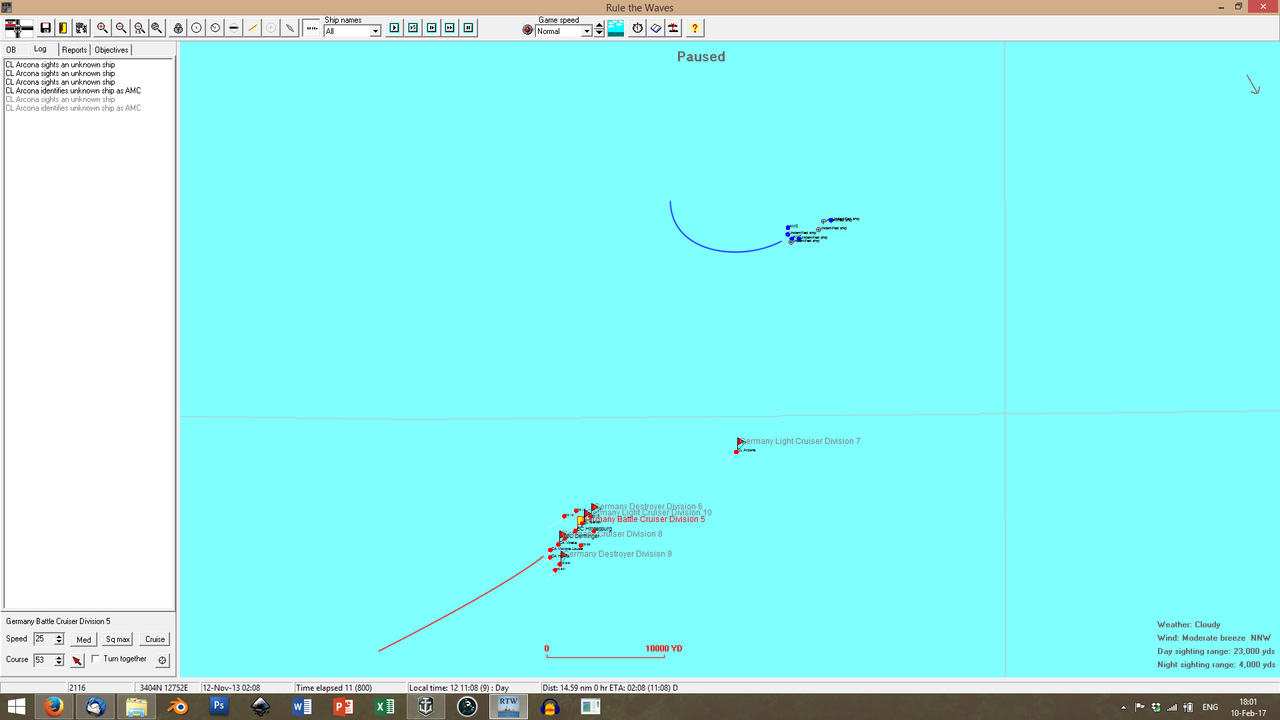
It is the 12th of November; and
Arcona, sailing ahead of the German fleet, spots the enemy convoy south of the Korean peninsula. The local time is just before noon; the weather is cloudy, but the atmosphere is clear and the Germans have more than seven hours ahead of them until nightfall. The enemy spots
Arcona in return, as the German cruiser accellerates to intercept; and they immediately turn towards the north. The rest of the German battlefleet is almost ten thousand yards behind
Arcona;
Hindenburg and
Derfflinger are leading, with the older
Victoria-Louise cruisers (including
Hertha, now for the first time ever not flying Galster's flag) bringing up the rear.
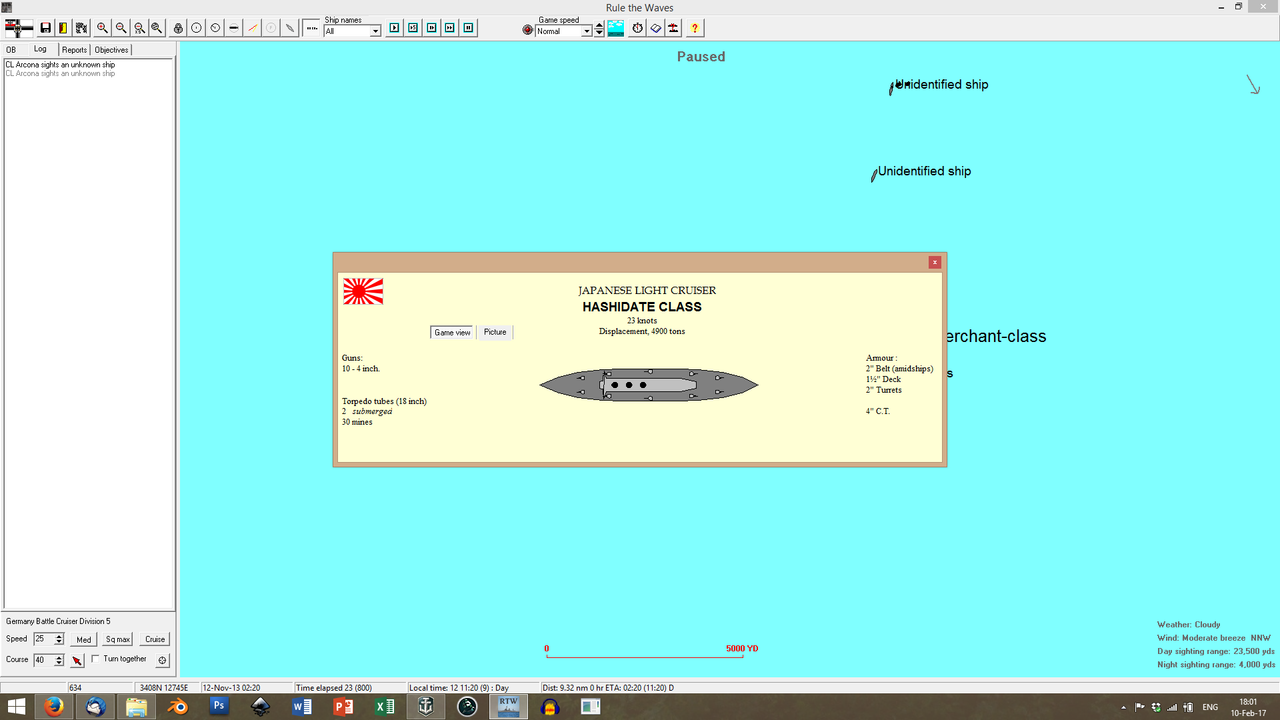
Arcona continues her stellar scouting work; twenty minutes after first contact, she has identified a
Hashidate light cruiser...
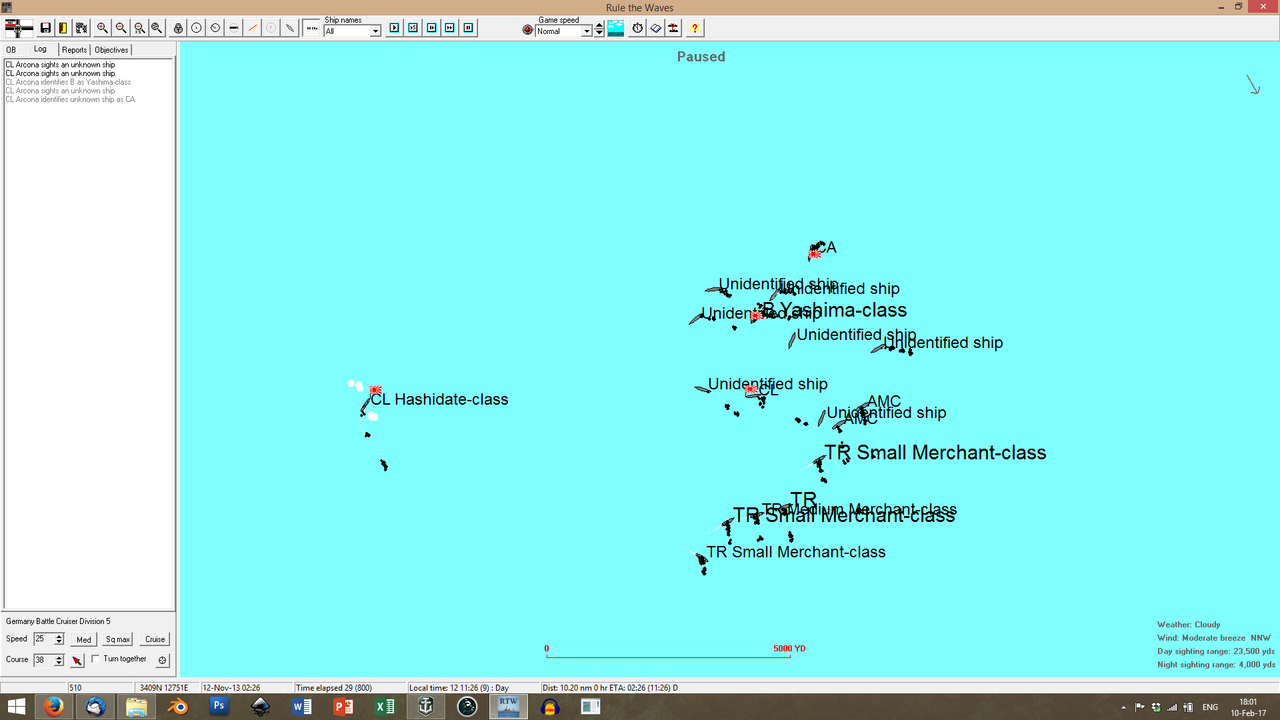
...and, inside the panicked ball of Japanese merchantmen, she also makes out the larger hulls of...
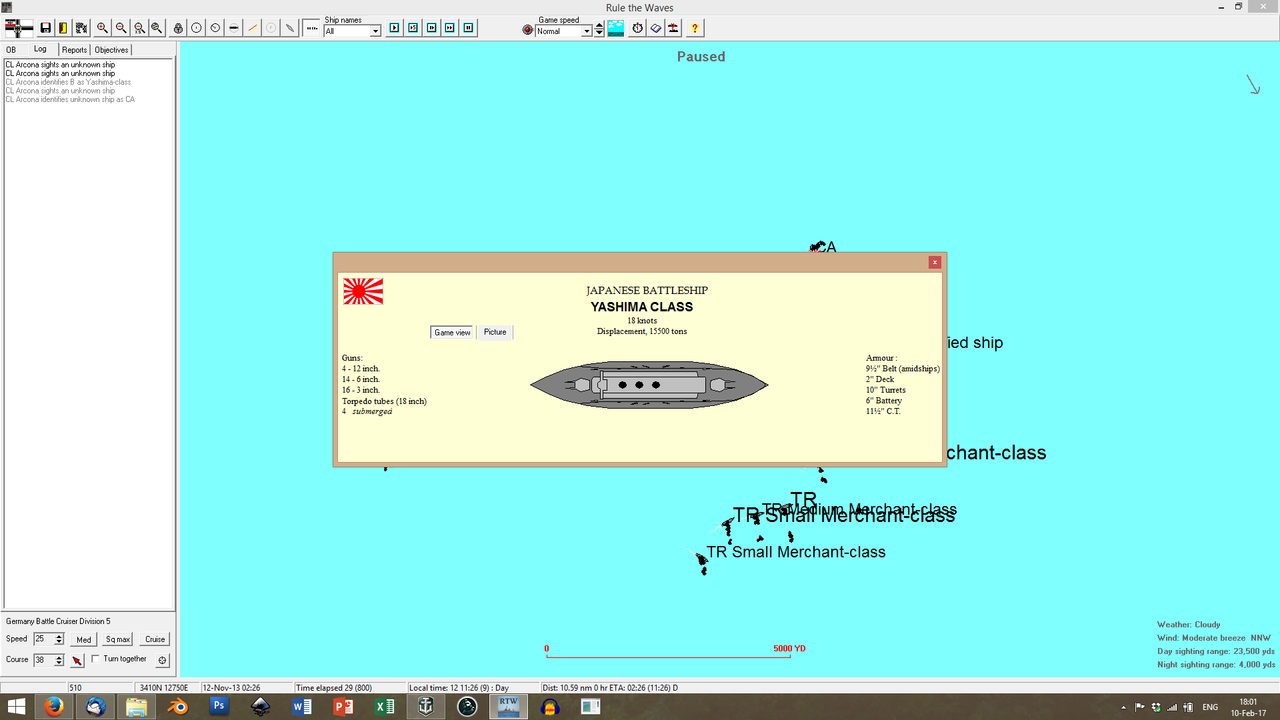
...a
Yashima-class battleship...
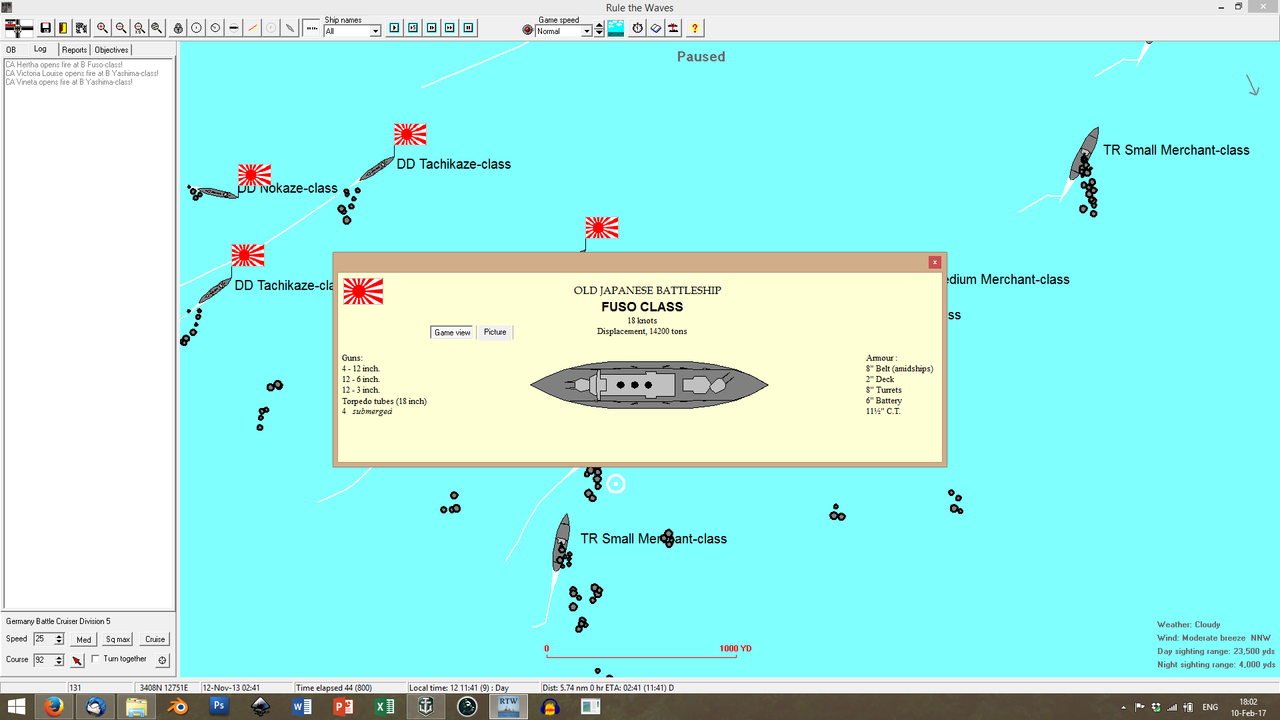
...and the
Fuso, the oldest Japanese battleship currently in service. Both ships are British-built, with 12-inch guns; they are almost half the size of the
Wittelsbachs, with less than half their broadside and can only make 18 knots to the German behemoths' 25. Sadly for the Japanese, they are, indeed, the heaviest ships they can field.
 Arcona
Arcona slows down and allows the battle-line to overtake her; the two
Schlachtkreuzer lumber past her at flank. Their batteries are already training to take the Japanese predreads under fire. Meanwhile, the cruisers are opening fire on the transports, who, in turn, are peeling off towards the north-west.
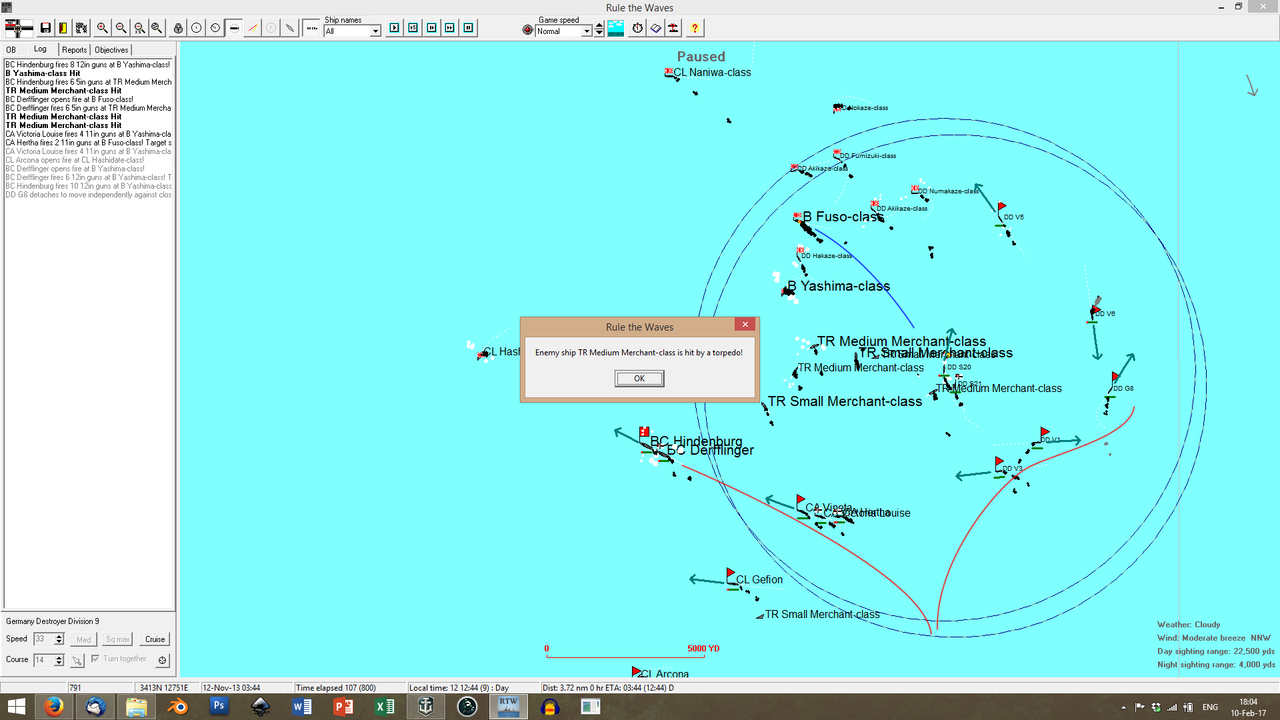
Galster will not allow them to escape. He turns his battle-line to the west, in pursuit; and lets his secondaries hammer the transports, keeping his main guns on the enemy capitals. His
Zerstörer flank from the east; and they blanket the convoy's path with torpedoes. An hour after the first shot is fired, four enemy transports are burning.
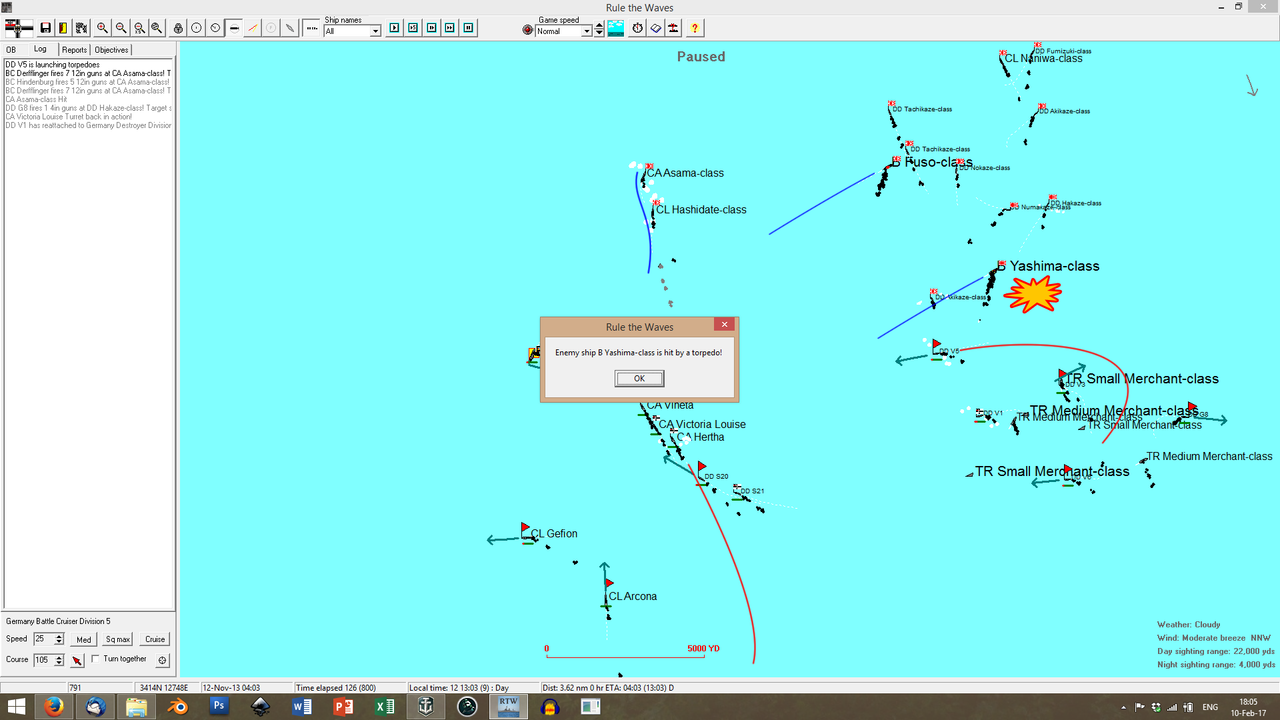
The Japanese battleships turn towards the east, to escape the guns of the
Wittelsbachs; but that brings them near the
Zerstörer. The
V5 screams past the
Yashima at a range of under two thousand yards - and one of her torpedoes hits the enemy battlewagon on the aft.
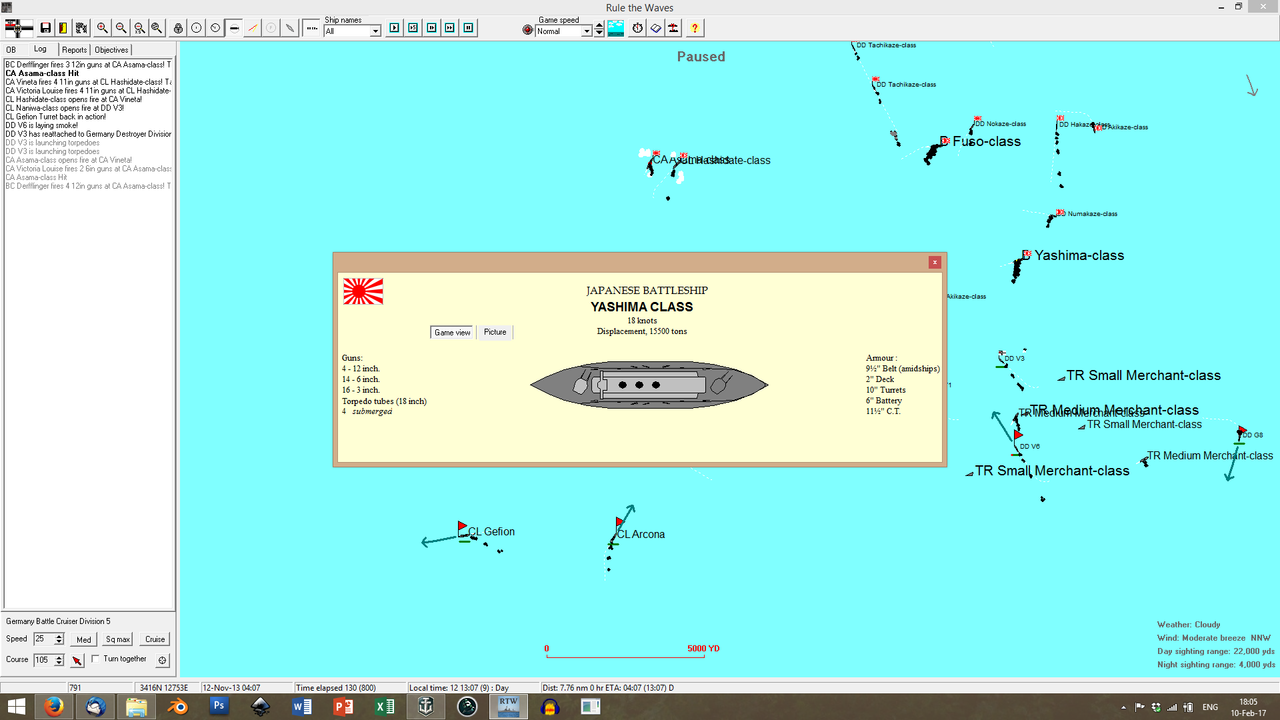
Her rear turret jams, and the
Schlachtkreuzer train their guns away from her (they can catch up to her anytime, after all) and focus on the Japanese heavy cruiser
Asama, to the north.
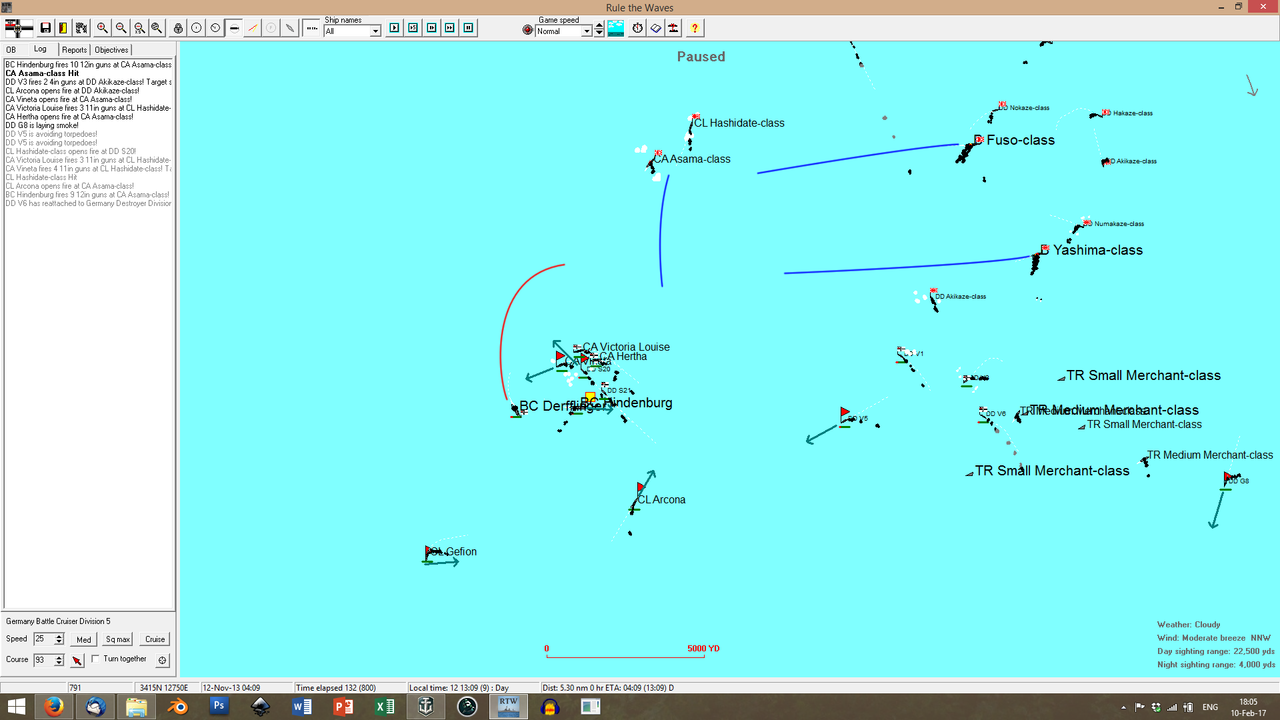
Galster is vaccilating. The convoy is long-sunk, but he does not wish to close the range against the Japanese forces. The enemy still has several destroyers available; and all his ships are armed wit torpedoes. He brings the fleet around, trying to take stock of the situation.
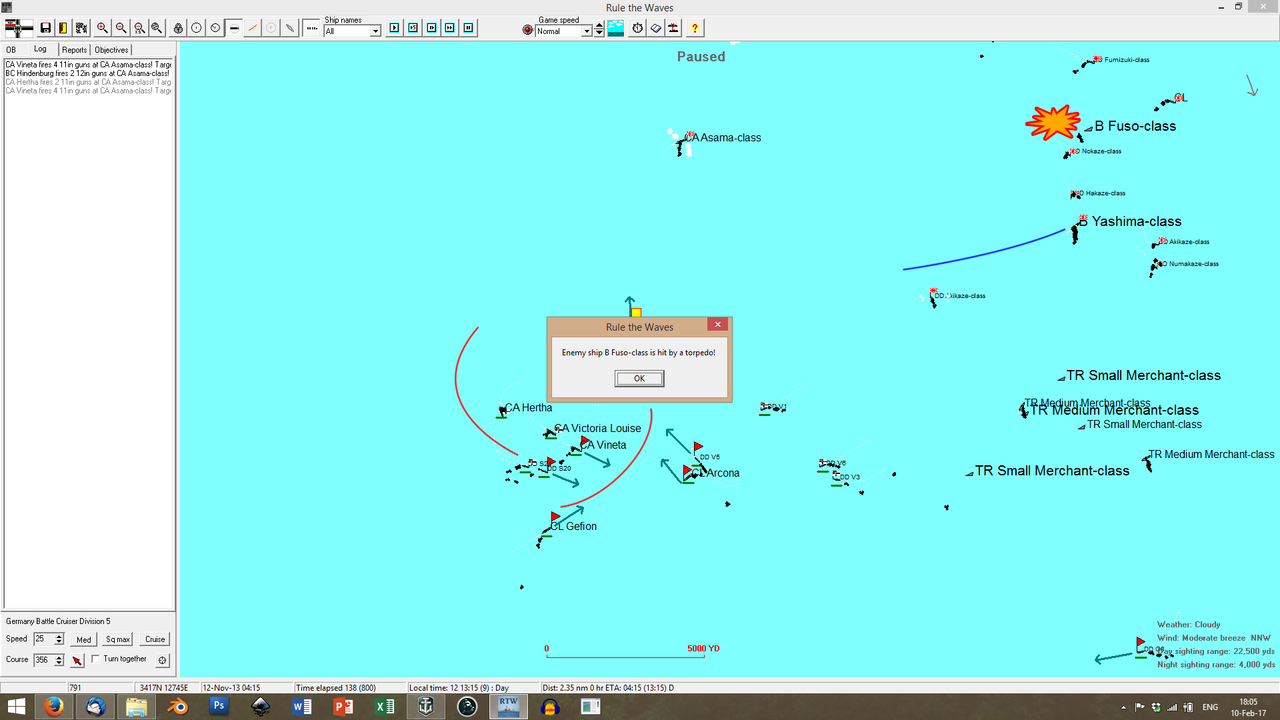
And then, a massive fountain of water erupts from the side of the
Fuso. Galster is stunned. That's a torpedo strike, but there are no German
Zerstörer within torpedo range of the foundering Japanese ship.
The explanation is simple, but hard to believe. The torpedo is Japanese. One of the Japanese destroyers loosed her torpedoes against the closing German
Zerstörer, but failed to perceive that they would cross the
Fuso's path.
The end result is appalling. The
Fuso has already taken some accurate fire from the
Schlachtkreuzer; the powerful Japanese torpedo hits her amidships and cracks her hull like a nut. She rolls over and sinks in under four minutes, taking more than half of her crew of a thousand down with her.
The
Yashima is now alone, against two of the most modern warships in the world.
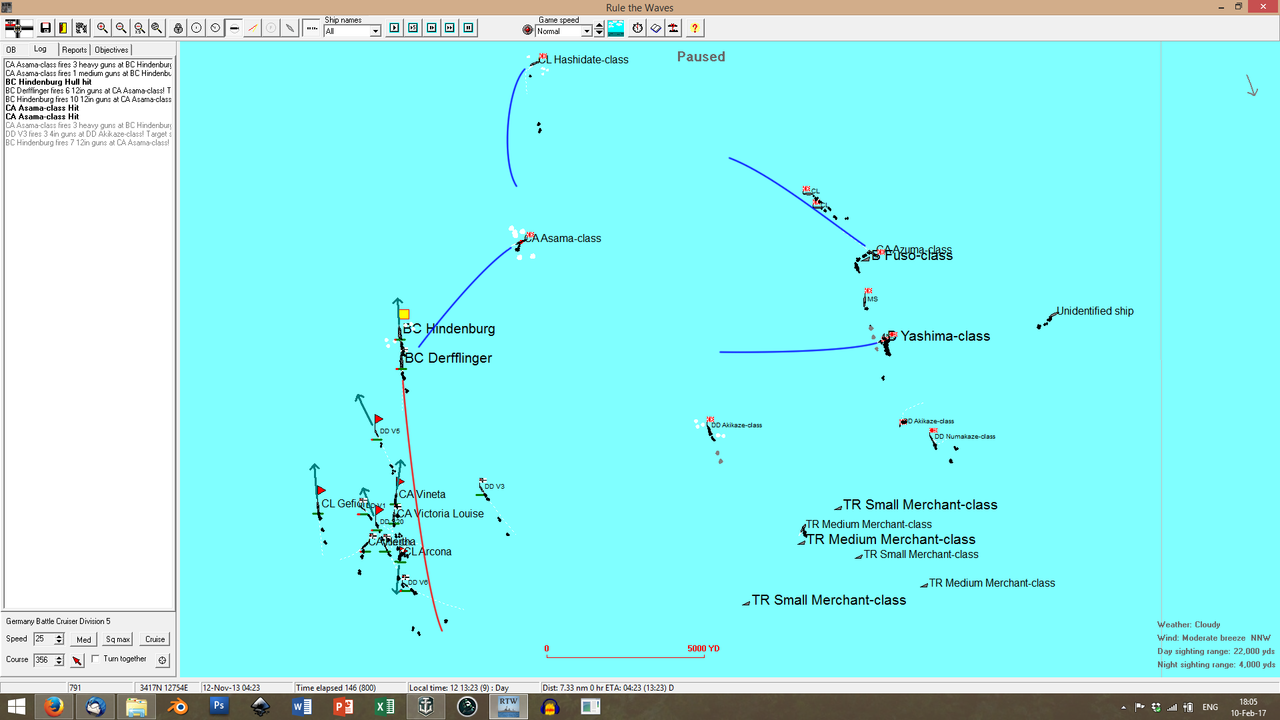
As she tries to escape towards the east, the
Schlachtkreuzer move north, taking the armored cruiser
Asama under fire and scoring several hits. The Japanese ship fires back; her shells bounce harmlessly off the
Hindenburg's armor.
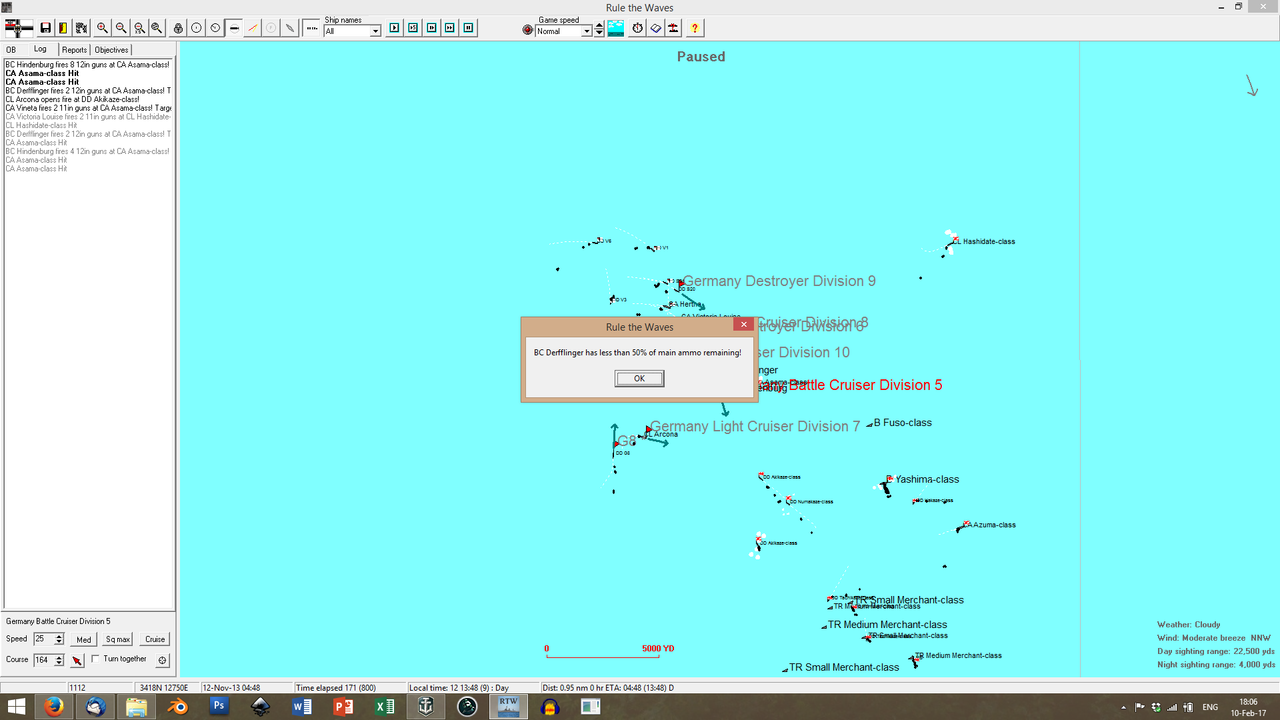
Almost three hours into the fight; Derfflinger's gunnery officers report that her magazines are half-empty.
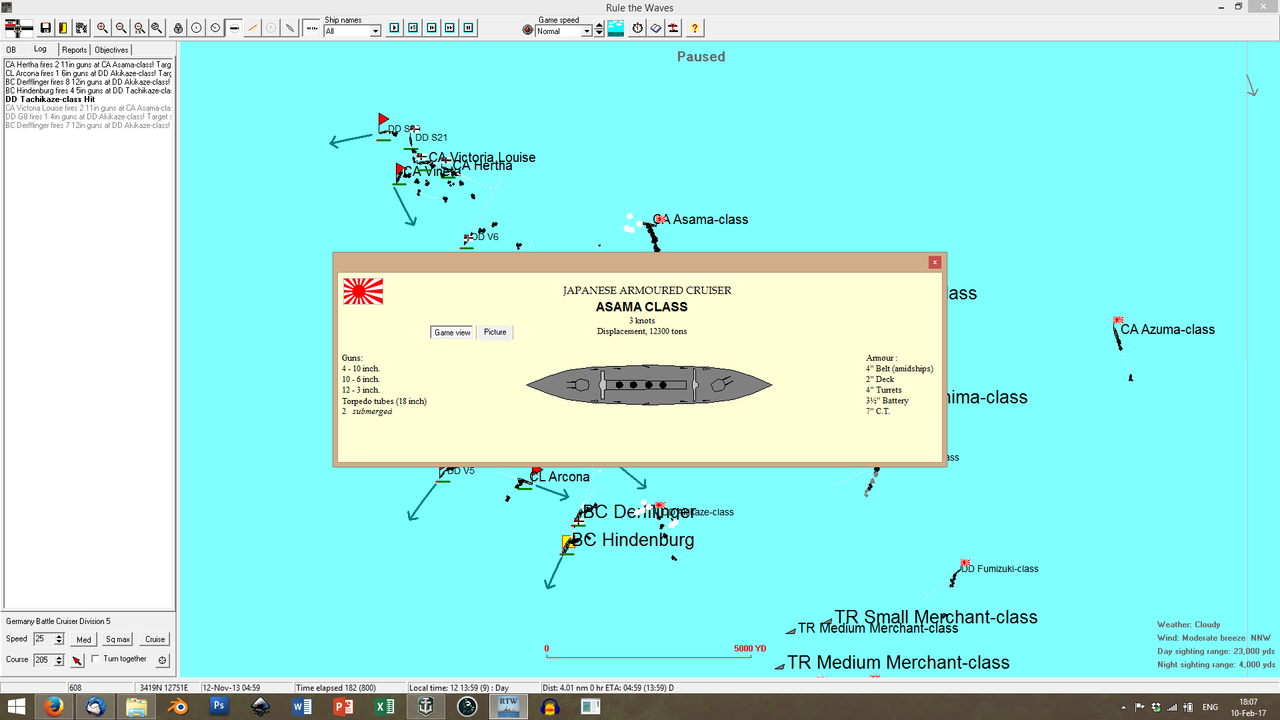
But the
Asama, now under fire by
Hertha and her sisters, is a floating wreck, her engines dead and her turrets knocked out.
The
Schlachtkreuzer move to intercept the
Yashima-
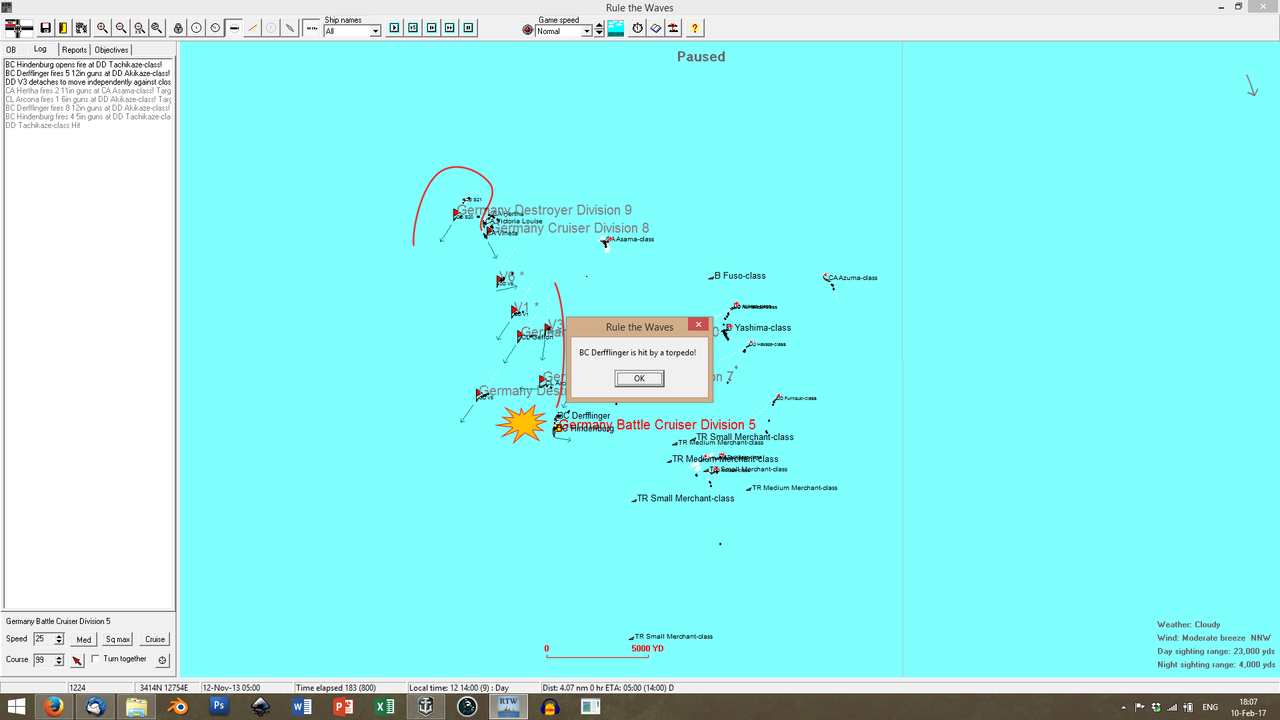
-and then, a Japanese DD redeems its brethren with an insanely lucky successful long-range torpedo strike on the
Derfflinger. Water fountains well over the port broadside, as the warhead buries itself in the
Schlachtkreuzer's torpedo bulge. Alarms blare all over the ship; and damage control crews scramble to the stricken area.
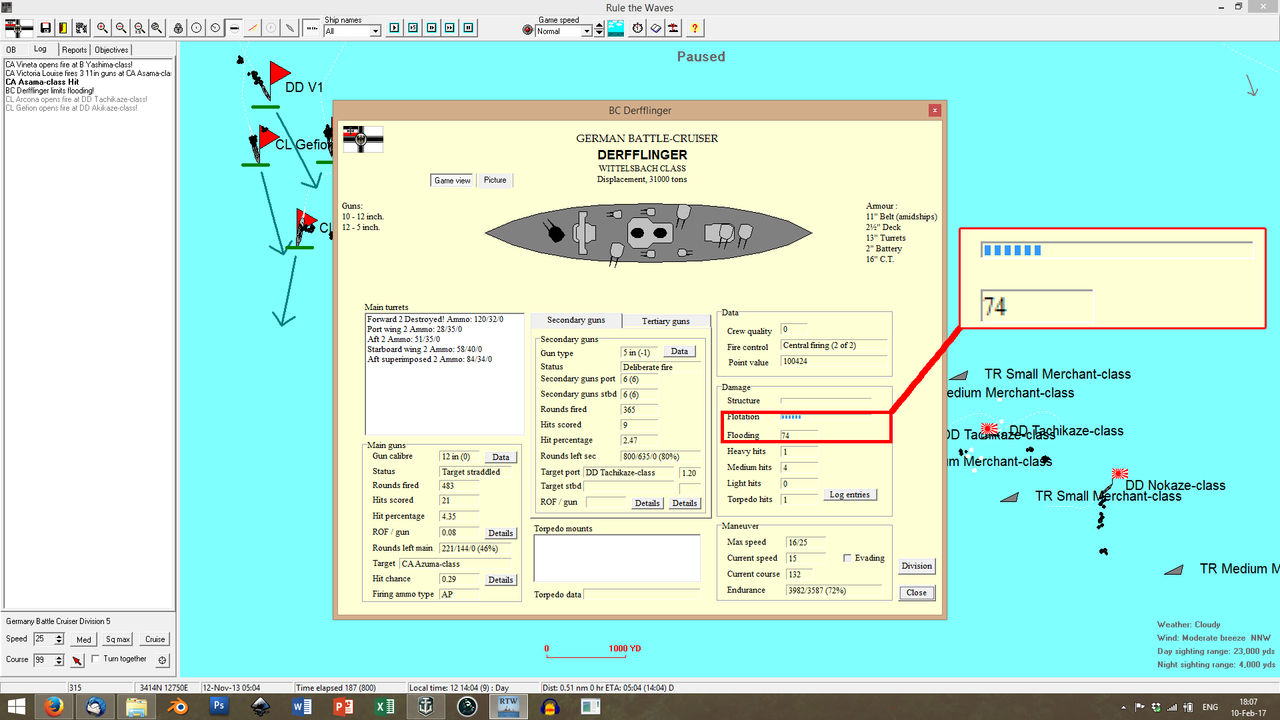
The verdict is...surprisingly optimistic, and a testament to the successful implementation of underwater torpedo protection by the Germans. The torpedo hit just at the forward end of the bulge, flooding two underwater compartments, and the front turret of the ship falls silent, as the loaders are ordered to evacuate and flood the magazine, for safety reasons. But the actual
flooding is controlled. Watertight doors are holding and the bulkheads are strong. The damcon crews scream at the bridge to cut speed for emergency repairs; the
Derfflinger slows to her cruise speed of 16 knots. She is
still faster than the battered
Yashima.
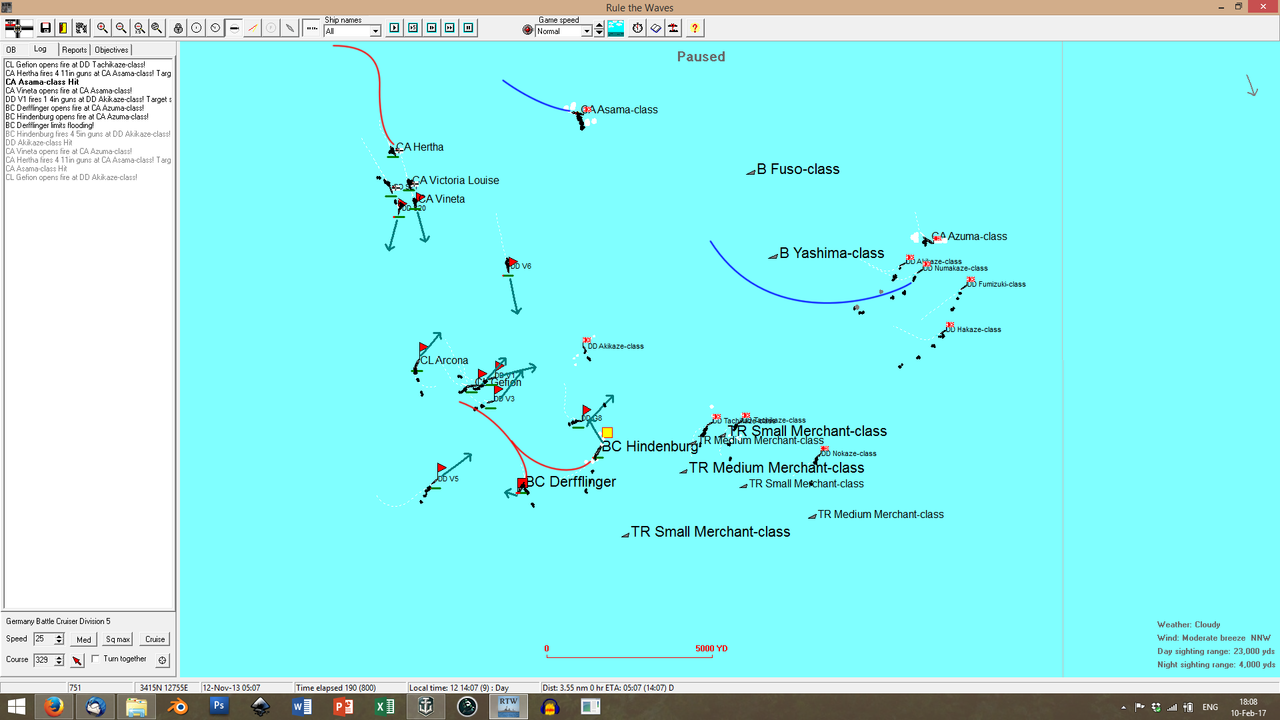
But Galster will not risk a second lucky strike, or a capital ship loss.
Derfflinger is ordered to detach and sail away from the battle, until they have the flooding under full control; the
Hindenburg, on the other hand, takes up pursuit alone, cruising past the drifting hulks of the battered convoy.
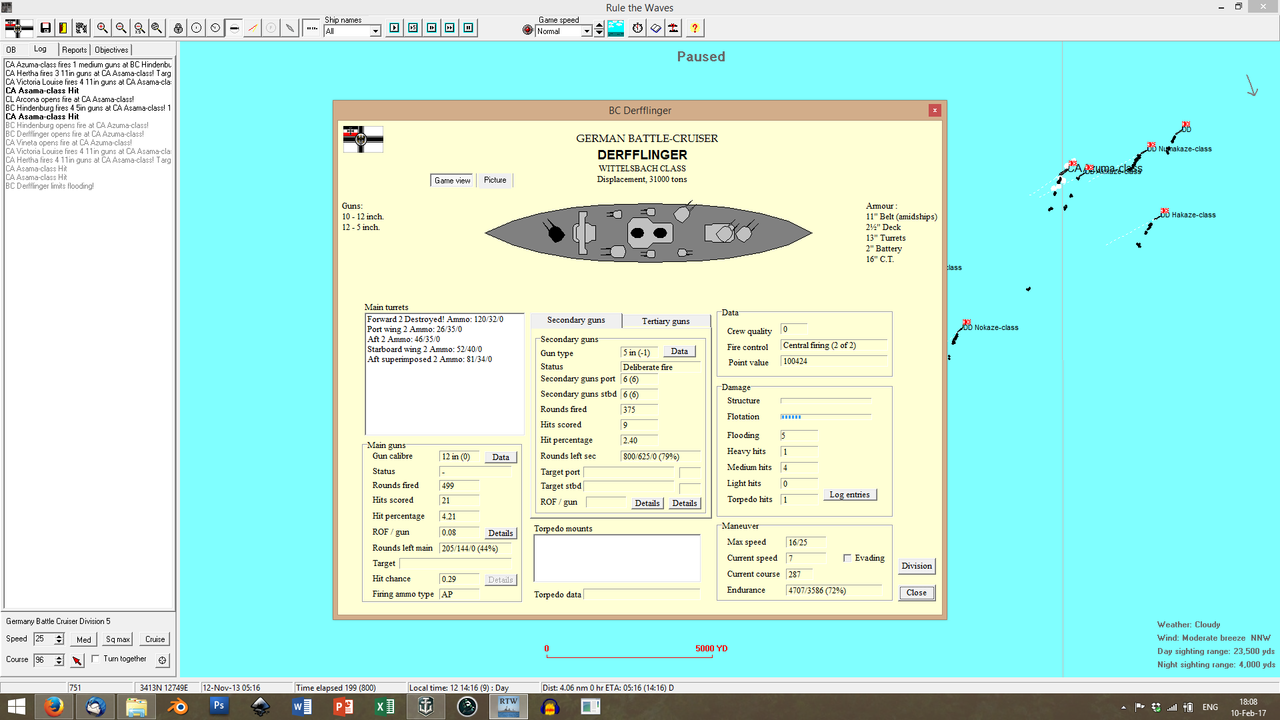
The Germans are well-acquainted with the necessary damcon procedures by now. Ten minutes after the torpedo strike, the flooding on
Derfflinger is pretty much dealt with.
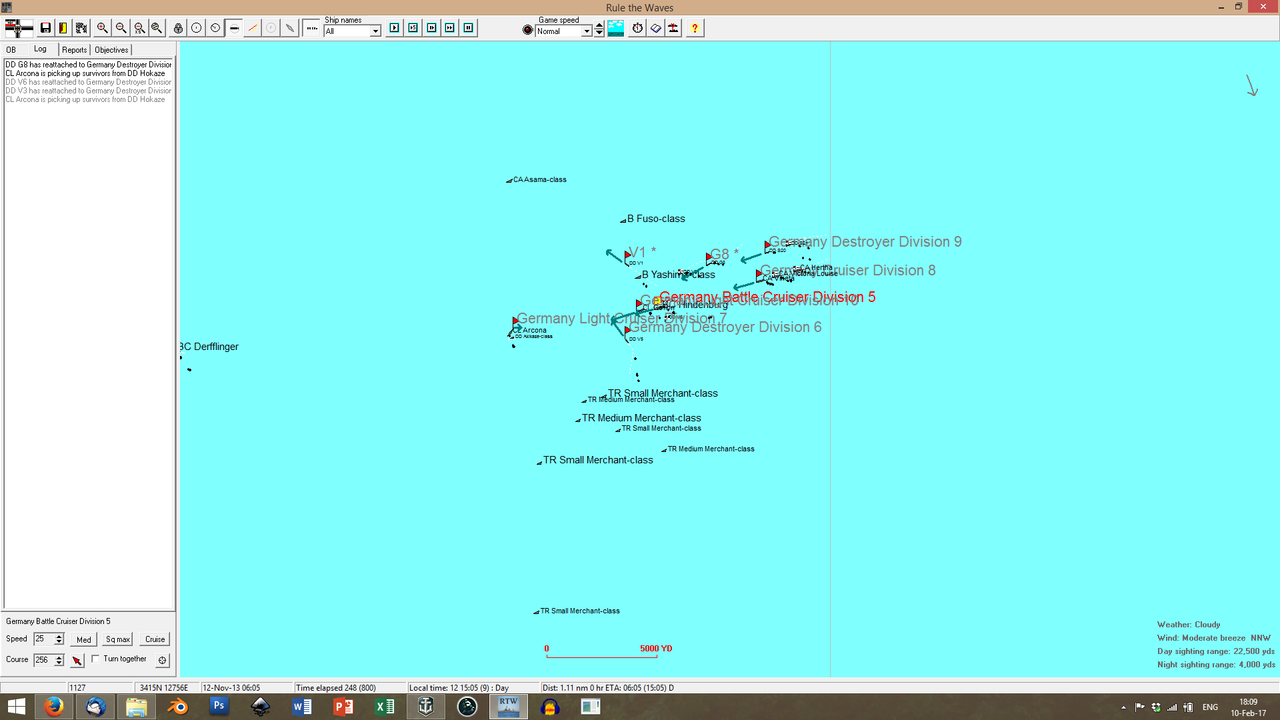
And, shortly after, the
Yashima's bow slips quietly, almost anticlimactically, under the waves, after a savage pounding at the hands of
Hindenburg. Dusk is falling, after a four-hour battle; Galster signals his forces to retreat. He is too canny to risk a nighttime pursuit of the Japanese light forces.
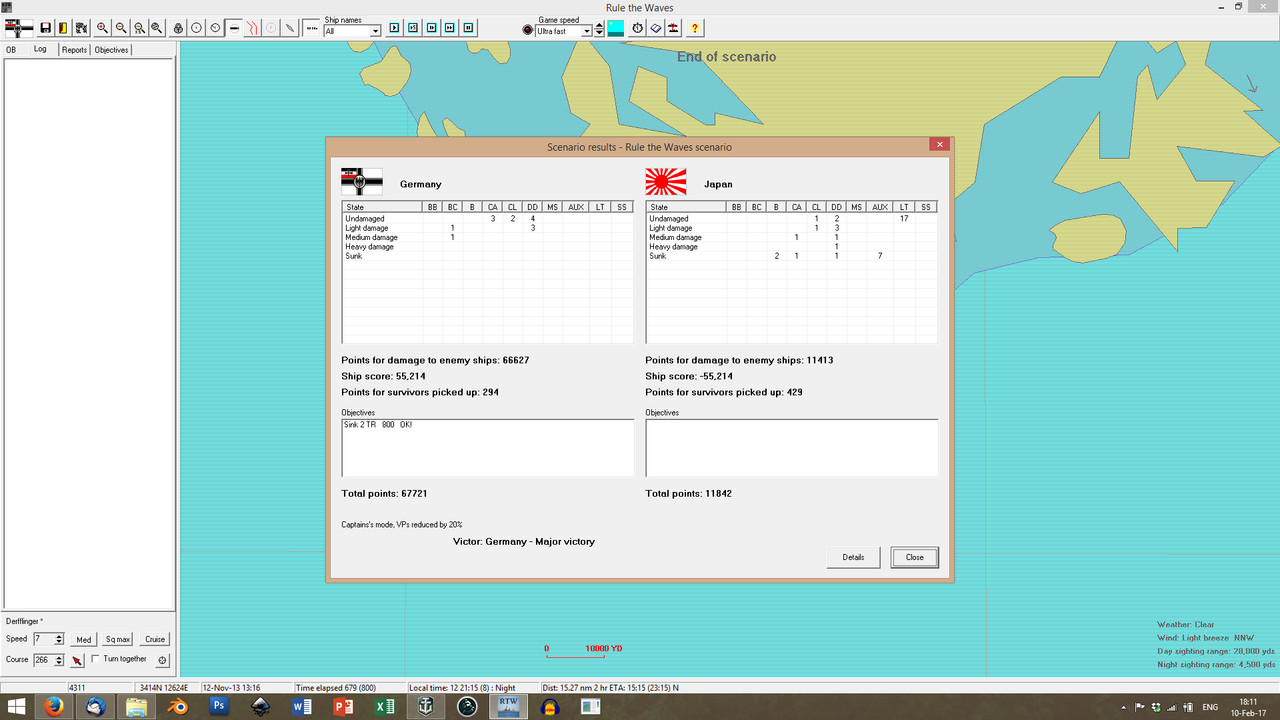
The German forces sail into their harbors in Northern Korea, tired yet satisfied. This is a great victory. The Japanese now have no battle-fleet worth the name (their first dreadnought is more than a year away from completion). They have lost their two pre-dreads and the
Asama-class cruiser
Tokiwa, as well as the entirety of the resupply convoy; in return, they've scratched the paint on
Hindenburg and three
Zerstörer, and dealt some damage to
Derfflinger that is easily repairable.
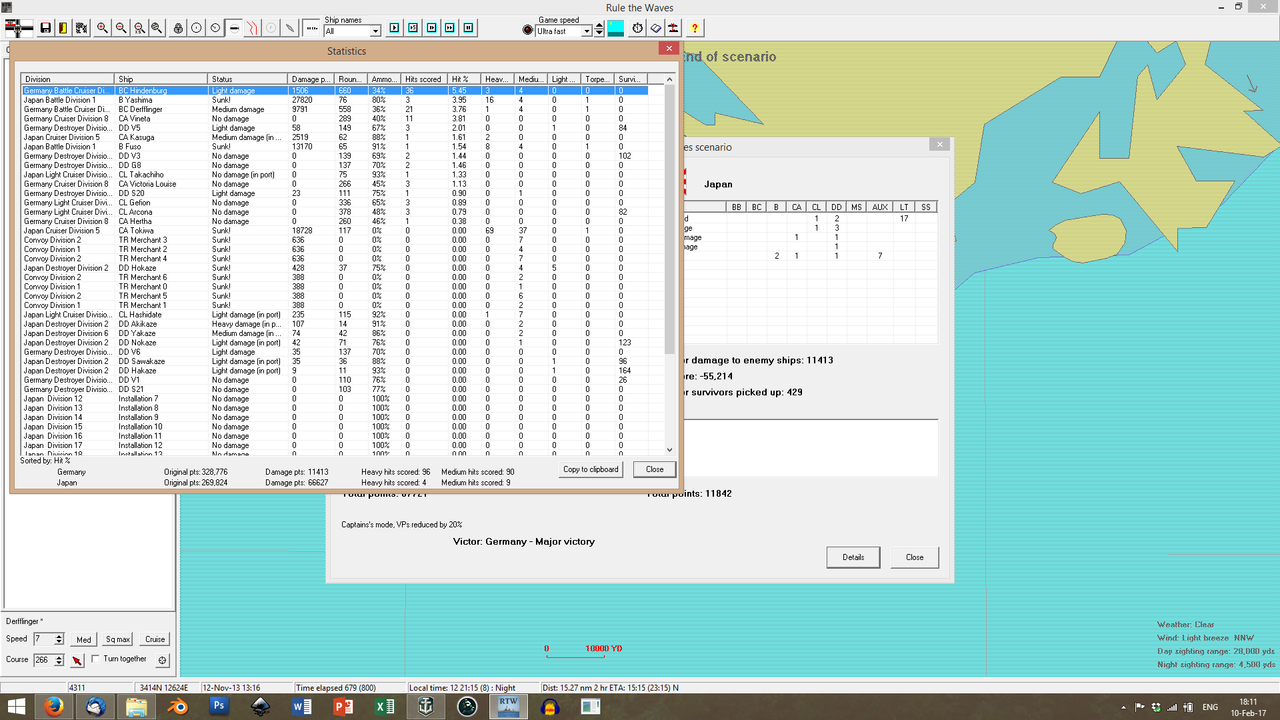 Hindenburg
Hindenburg is clearly MVP, with over
six hundred rounds fired and more than
thirty confirmed hits on target;
Derfflinger follows suit with over five hundred shots fired and twenty-odd hits. The old cruisers have emerged entirely unscathed from the fight, but only
Vineta has made any meaningful contribution, with eleven hits scored. The Japanese performed abysmally from a gunner's perspective, with only four heavy hits received by the German ships. In
total. Over four hours of combat.
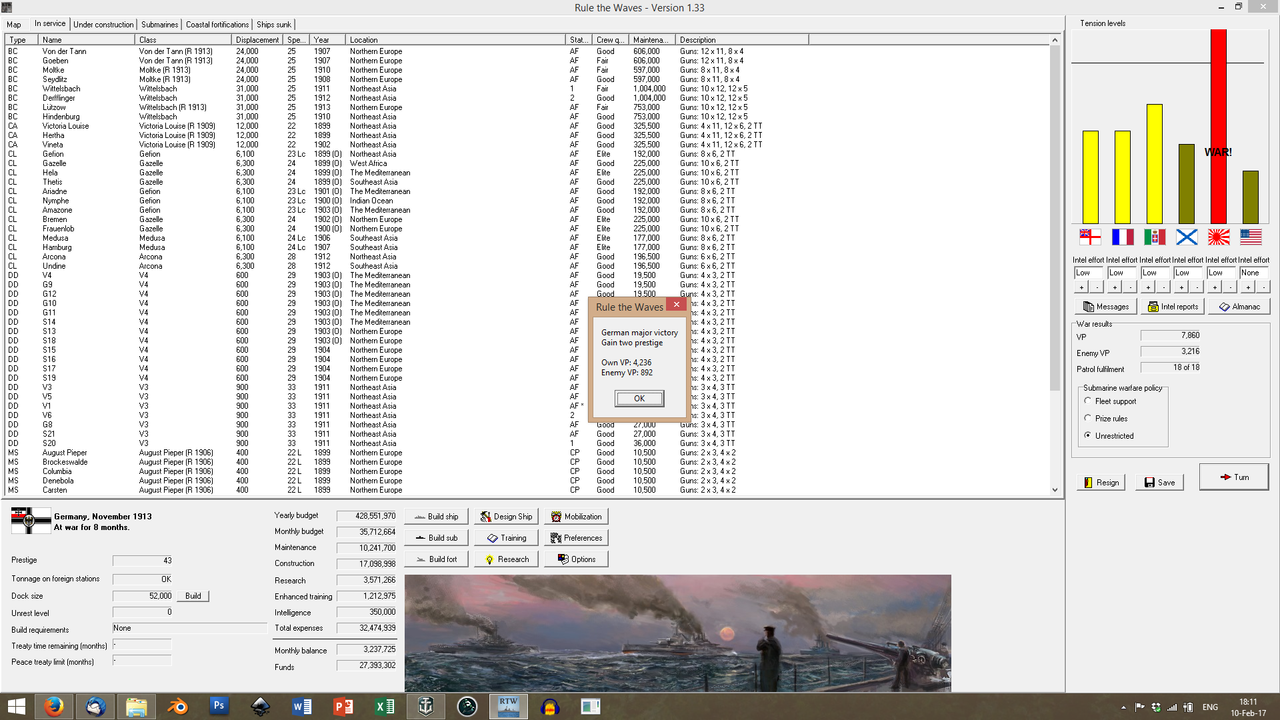
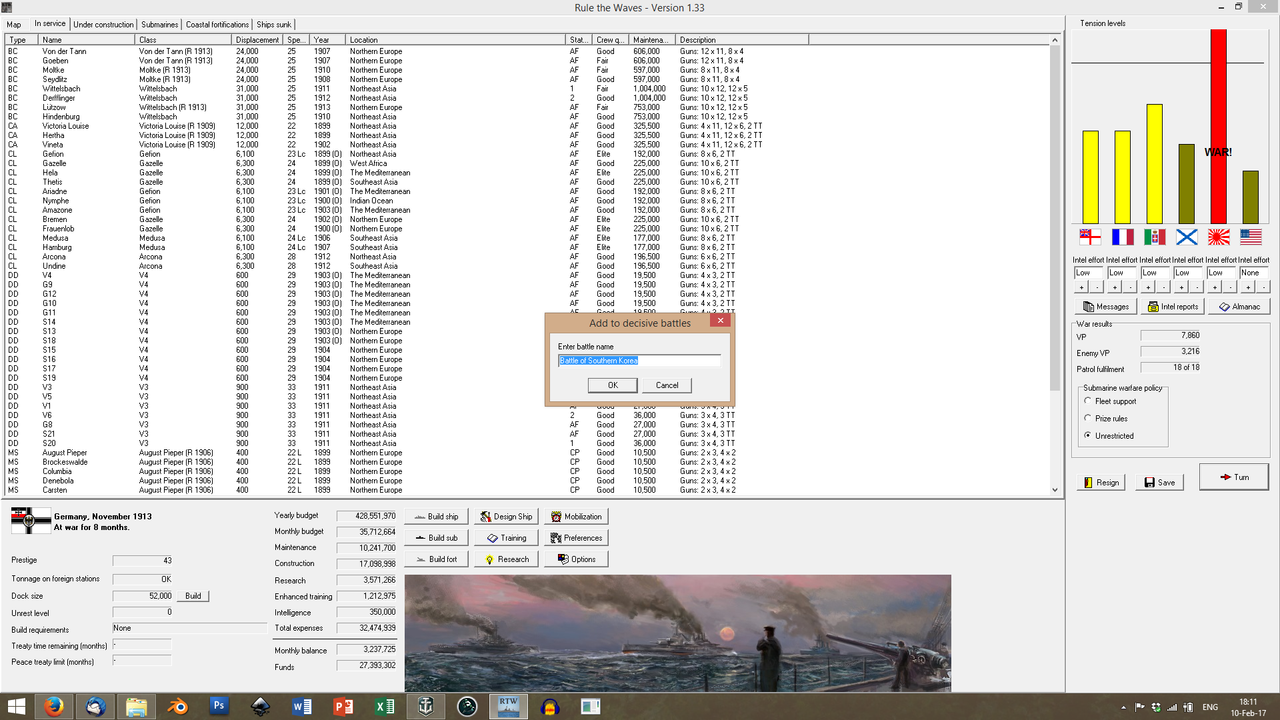
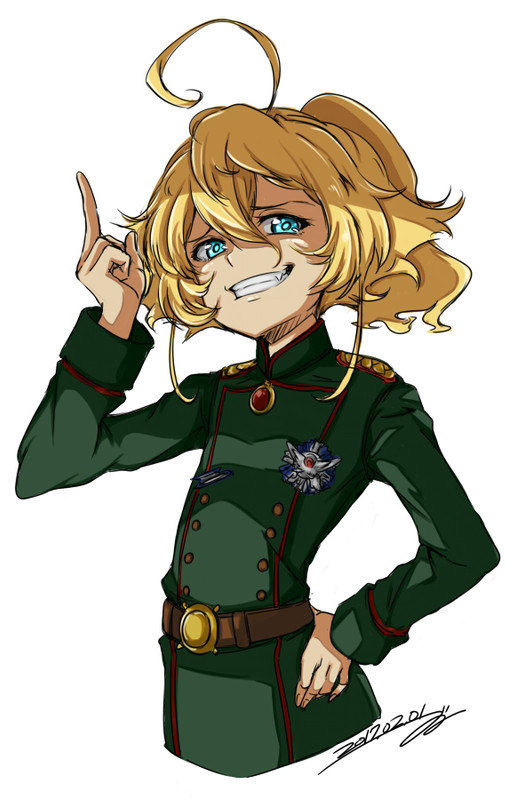
The Battle of Southern Korea is a great victory and the
Wittelsbachs have survived their baptism of fire with flying colours! The
Admiralität celebrates, when the news reach Germany.
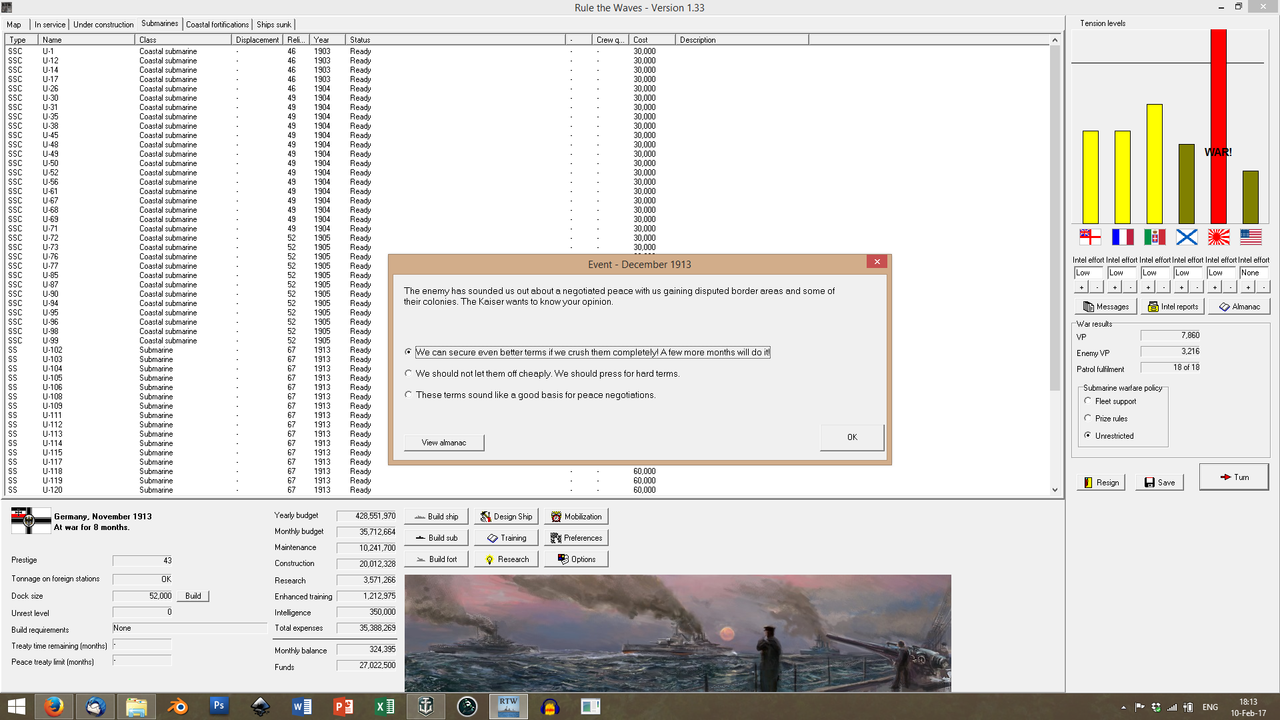
It is no surprise when the Japanese sue for peace. They are starving and their fleet -their lifeblood- is gone, with the exception of a few raiding cruisers and a couple of old, turn-of-the-century heavy cruisers.
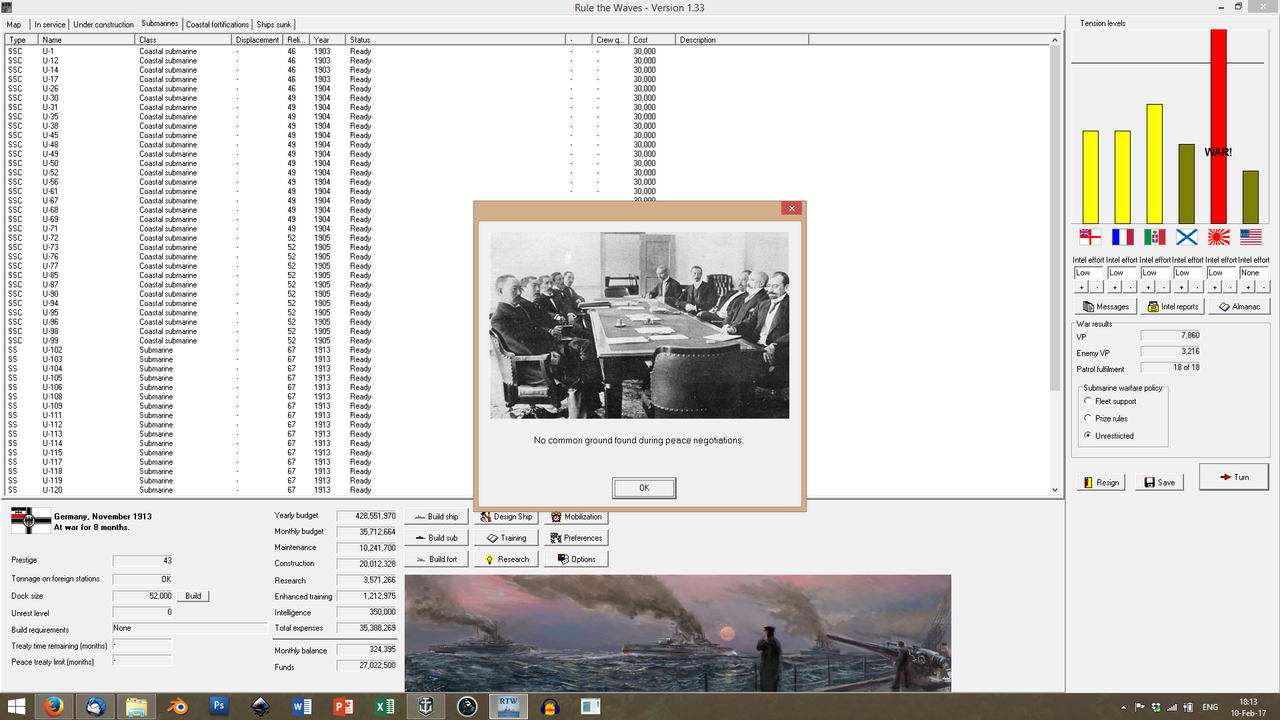
What
is surprising is that, even after a month of negotiations, they still reject Germany's terms.